PARIS

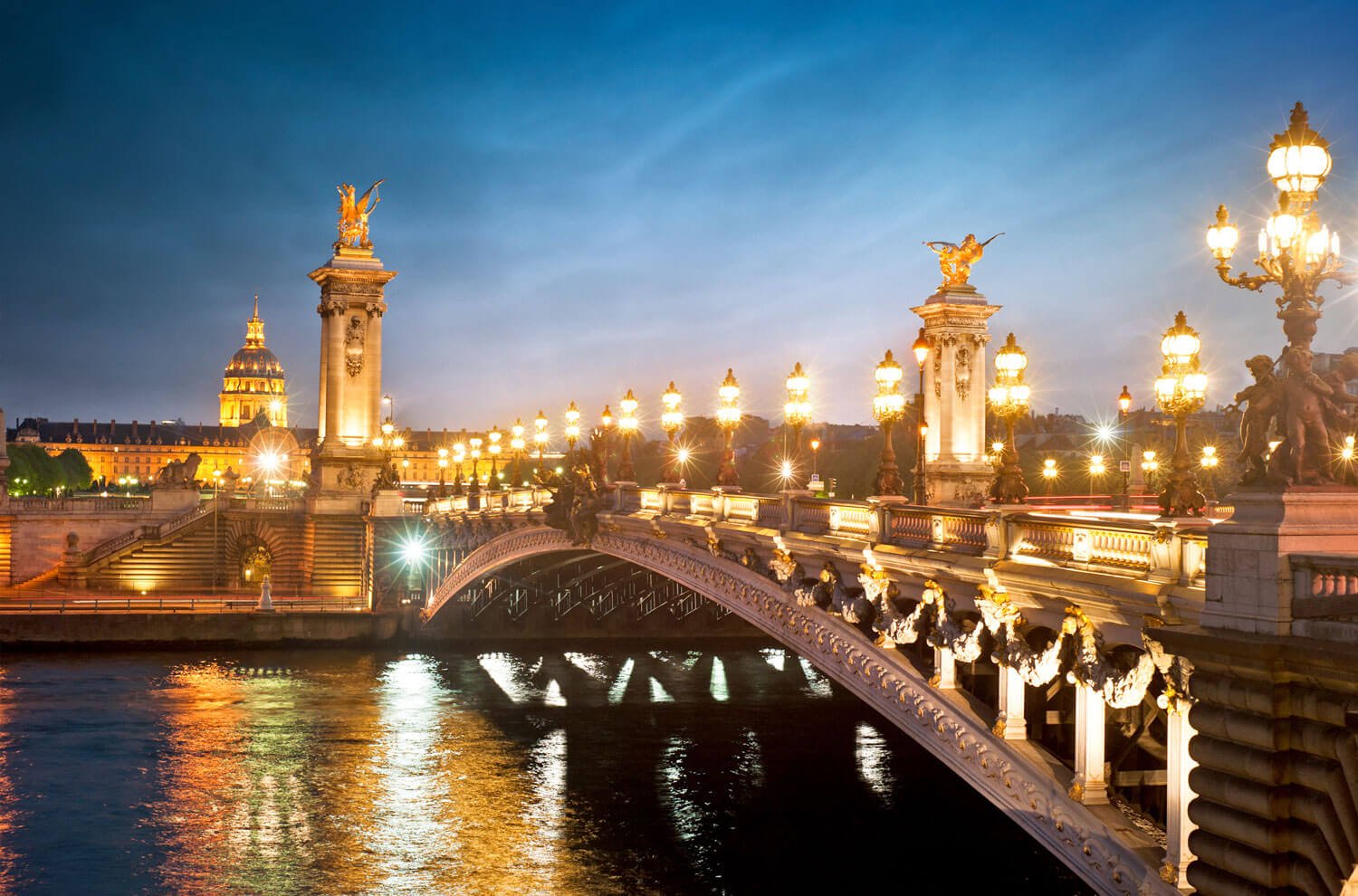
Make your trip memorable by visiting the Musee De Orsay or the Centre Pompidou, enjoy a pony ride at the Luxembourg gardens, enjoy the view of Paris from the summit of the Eiffel tower, visit the musical fountains at Versailles, do your fashion shopping on Champs Elysees, take a river cruise on the Seine, tuck into gourmet pastries or have an authentic French sit down dinner at a Michelin restaurant, or just walk through the streets of Montmartre or the Latin Quarter, whatever that it may be that you seek out, one thing is certain, Paris will enthral you.
PARIS CULTURE & CUSTOMS
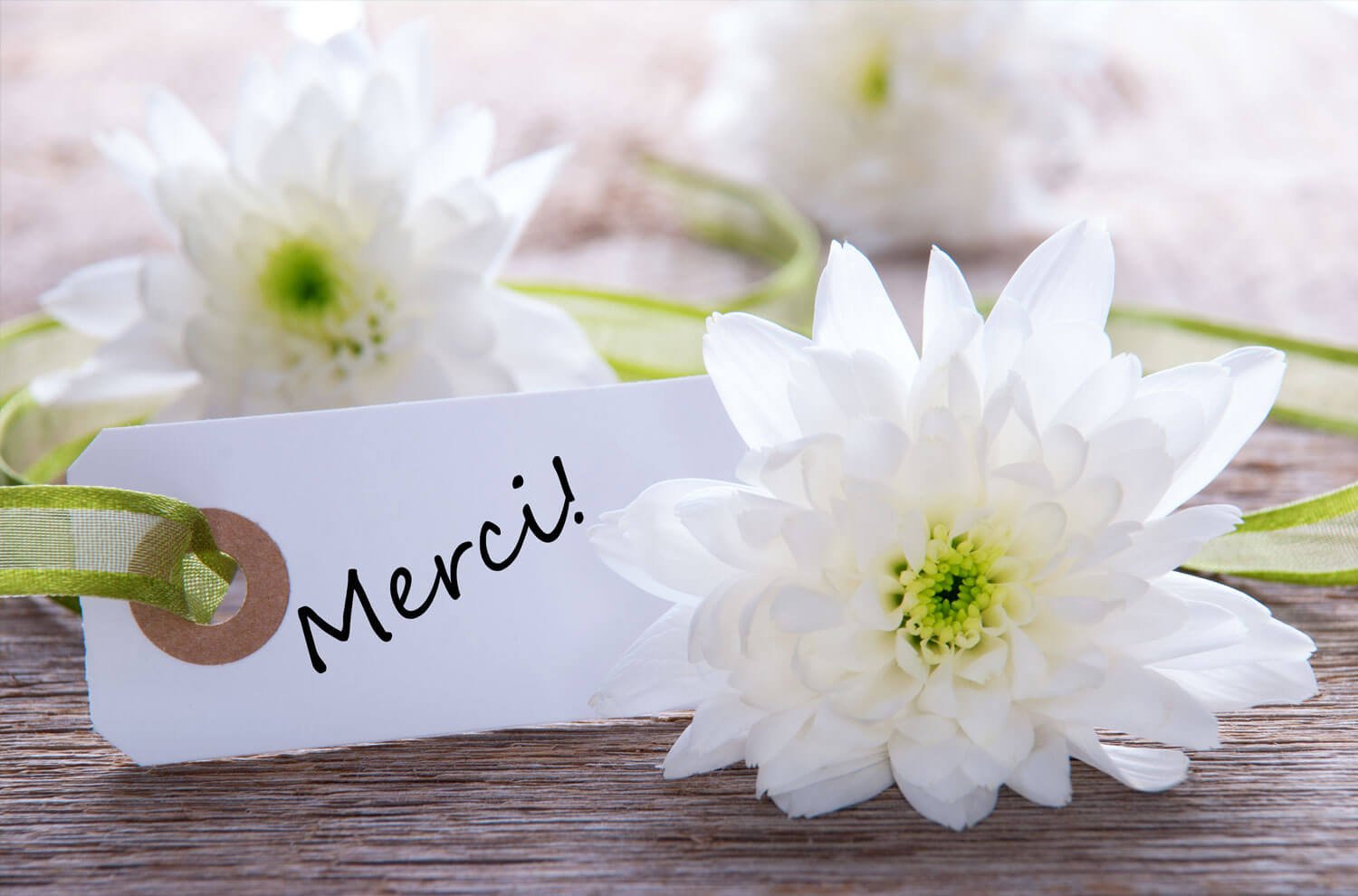
Try to adopt to the French way of life including their fashion, cuisine and sophistication. Do not be the uncouth tourist who insists on tomato ketchup at a fine dining restaurant or turn up in shorts and sandals at a restaurant, night club or cabaret.
PARIS DINING
If you want to sample French cuisine, do not forget to sample some the staples like French onion soup, croque-monsieur (a grilled cheese and ham sandwich smothered in more melted cheese), and coquilles St-Jacques (scallops seasoned, topped with cheese and bread crumbs and served in a shell). Sweet lovers should definitely try some French macarons, chocolate croissants, and gourmet pastries.
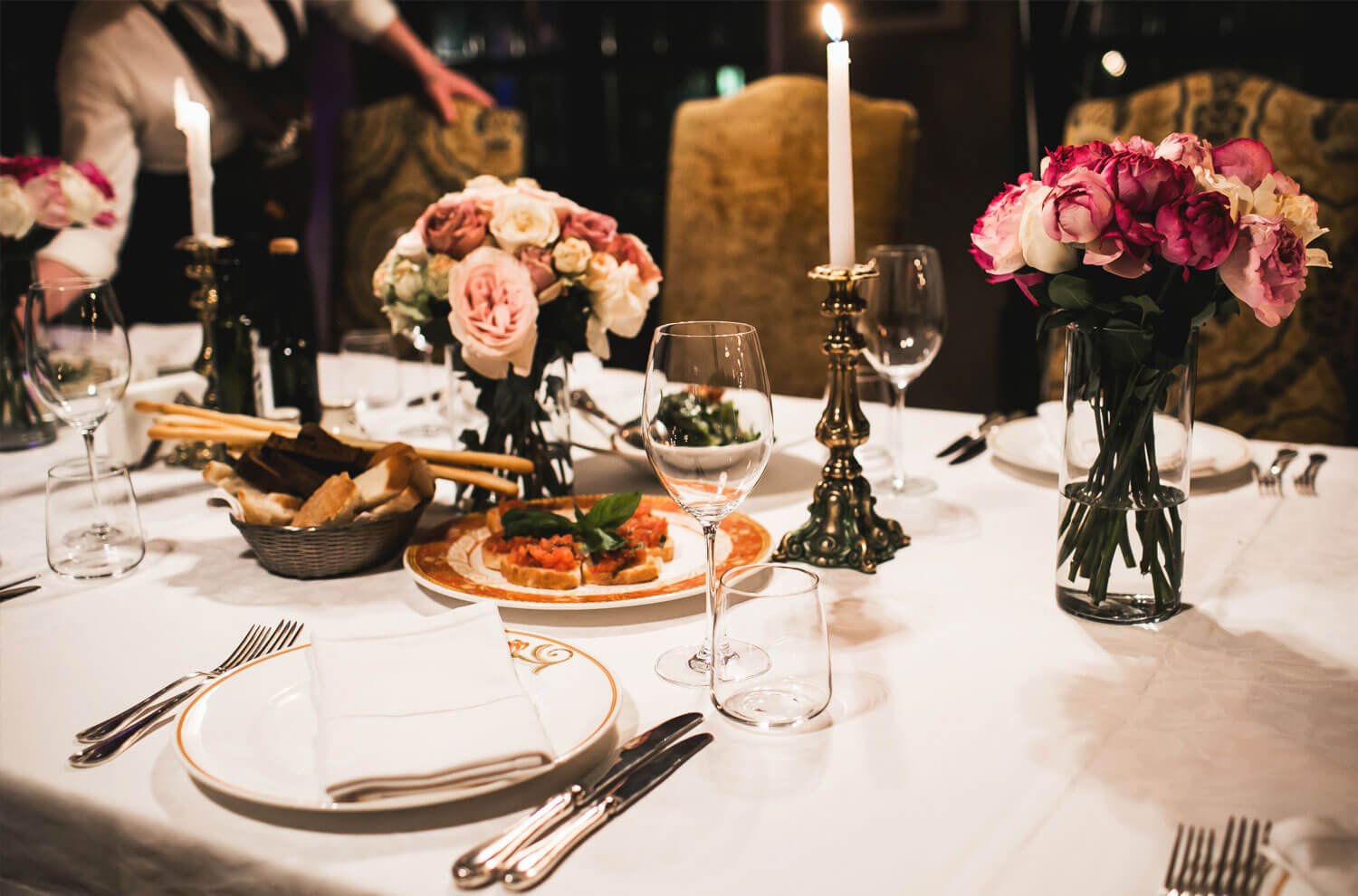
BEST TIME TO VISIT PARIS
Even five years ago, August saw Paris deserted by its citizens as they took off for their annual vacations to the coast or countryside. But today, Paris is alive, kicking and living it up. There are music festivals, open air movie screenings and the most popular of them, the Paris Plage or the Paris Beach when, roads along the Seine are closed and tonnes of beach sand is deposited by local authorities on the banks of the Seine and converted to a beach.
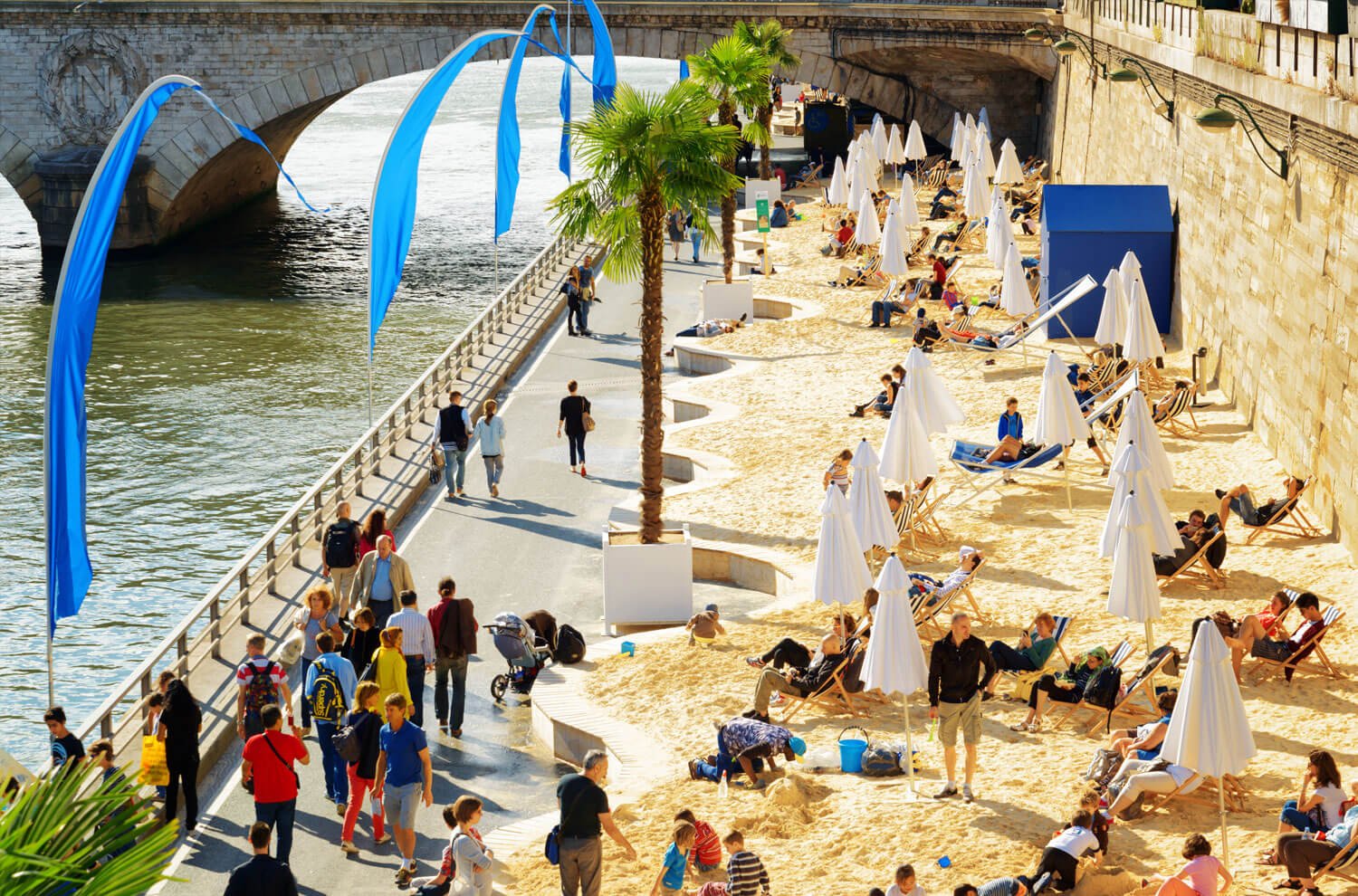
Winter will be dark and cold, but you do get bargains on airfare and hotels. It is that time of the year to bring out your latest jackets and scarves and strut on the chic and fashionable Champs Elysees.
Spring brings in the rains till May and then the temperature and prices rise in tandem till they peak in summer.
ARRIVING IN PARIS
As one of the premier destinations in the world, Paris is serviced by a great many international carriers. Air India, Jet Airways and Air France operate nonstop direct flights from Delhi and Mumbai. You can also connect to Paris using several other international flights like Lufthansa, Emirates, Qatar Airways etc., from different cities in India. Flying time to Paris is 9:15 hours from Delhi and 9:50 hours from Mumbai if you are availing a direct flight.
Airports
The major airports in Paris are Charles de Gaulle (CDG, also known as Roissy), which is 26 km northeast of Paris, and Orly (ORY), which is 16 km south of Paris. Most flights from India, direct or connected, use CDG.
From Airport to City
By bus from CDG/Roissy: The Roissybus, which is operated by the RATP departs every 15 minutes to Charles De Gaulle and the Opéra at intervals of 15 minutes from 6 am to 20:45 pm and thereafter till 00:30 am at 20 minute intervals. You can expect to complete the trip in 45 minutes if there is no traffic or at least 90 minutes during rush hour.
By shuttle from CDG/Roissy: Even if you have not flown into Paris by Air France, you can use the Air France shuttle service, which is a comfortable option.
There are several private van companies that offer shuttle services. You can either make a reservation by calling them or booking online. You might have to share their services with other travellers, which means there could be an additional delay of about half an hour if you are the last one off the shuttle.
By taxi from CDG/Roissy: Taxis are better avoided if traveling to the city, especially since you have to pay peak hour charges and the journey times are unpredictable and hence the prices too. You could almost end up paying up to €70 for getting into the centre of the city. A company called Voyages & Business, which is a subsidiary of Taxis G7 offers exclusive taxi services to and from airport which is generally about 40% less than a normal taxi rate. If you really need to take a taxi, ensure you hail them only from the designated taxi stands. The cabs have a sign on their roof and also have a meter.
By Train
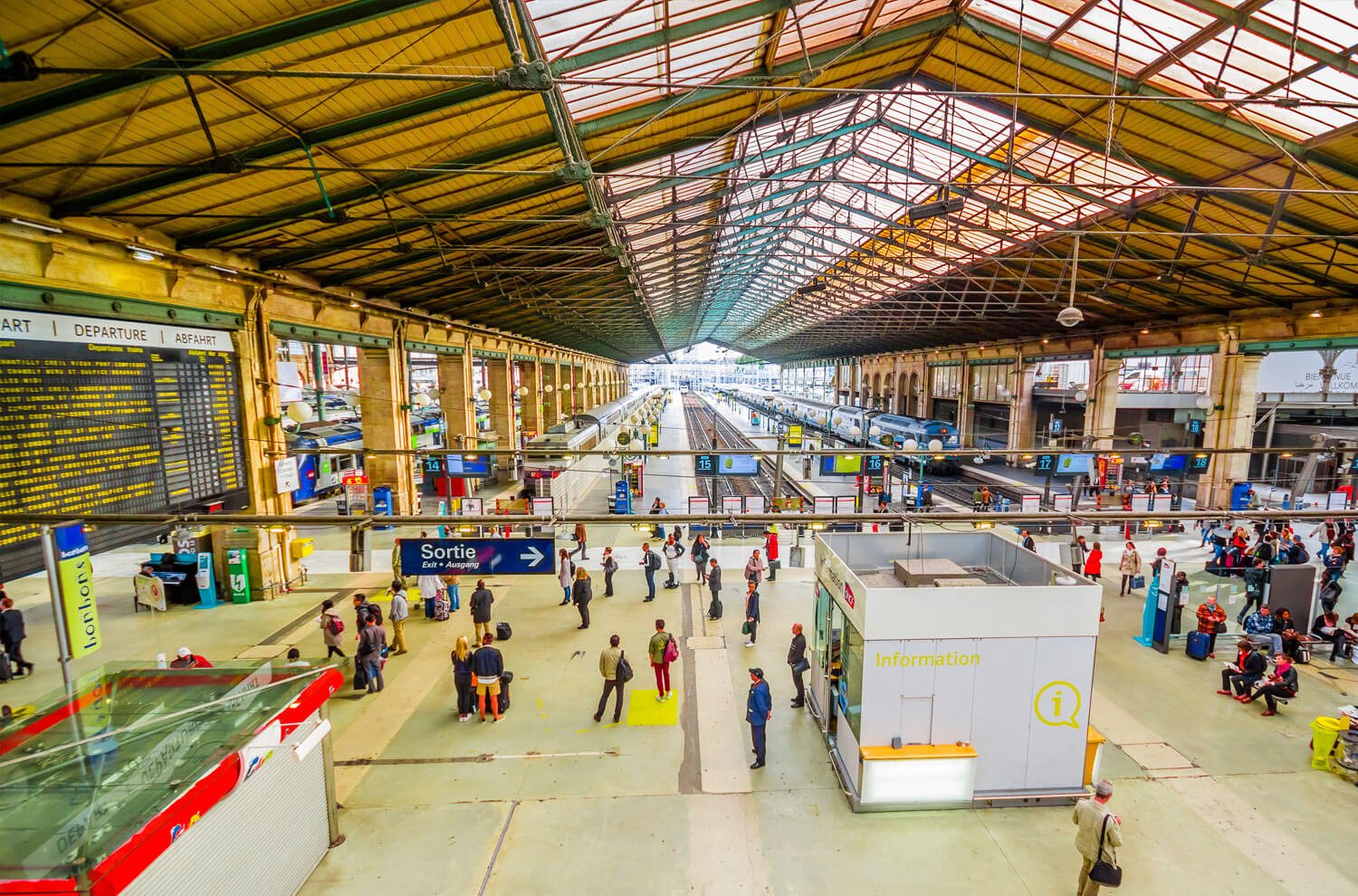
France’s has a wonderful train system that is punctual, comfortable, reliable and fast. There are direct trains to most cities of Europe. SNCF, the company that runs the railways have different train systems like local trains, sleepers that operate overnight services and the superfast TGV (Trains à Grande Vitesse) that average up to 320 km per hour.
TGV provides superfast connections to Lille/ Calais, Switzerland, Brussels, Amsterdam and various other cities.
Paris has six international rail stations: Gare du Nord ( connecting northern France, northern Europe, and England via Calais or Boulogne); Gare St-Lazare (Normandy, and England via Dieppe); Gare de l’Est (Strasbourg, Luxembourg, Basel, southern Germany, and Central Europe); Gare de Lyon (Lyon, Marseille, Provence, Geneva, and Italy); Gared’Austerlitz (Loire Valley, central France, and overnight to Nice and Spain); and Gare Montparnasse (Brittany, Aquitaine, TGV-Atlantique service to the west and southwest of France, Spain)
ORIENTATION

You will do well with the Paris Pratique Par Arrondissement, the essential map guide, available at newsstands and bookstores.
GET AROUND
Baron Haussmann’s, who was Prefect of the Seine Department in Paris was chosen by Napoleon III to re-design the City of Light which was until then a place filled with slums and filth. Thanks to his vision Paris was transformed into a wonderful amalgamation of wide leafy streets, huge parks, and vast squares, and with the added bonus of it being a very flat city, Paris is best explored on foot. But you should not underestimate the size of the city. Paris is a very huge city and you cannot cover all of it on foot. You will have to mix your shorter journeys on foot with your longer journeys either on the Métro, bus, or the RER inter region train service. If you plan to travel along the Seine, you have a choice of using the Batobus boat service to take you to many of the important points of the city including the Eiffel tower, Musee De Orsay, St Germain district and Notre Dame to mention a few.
Métro
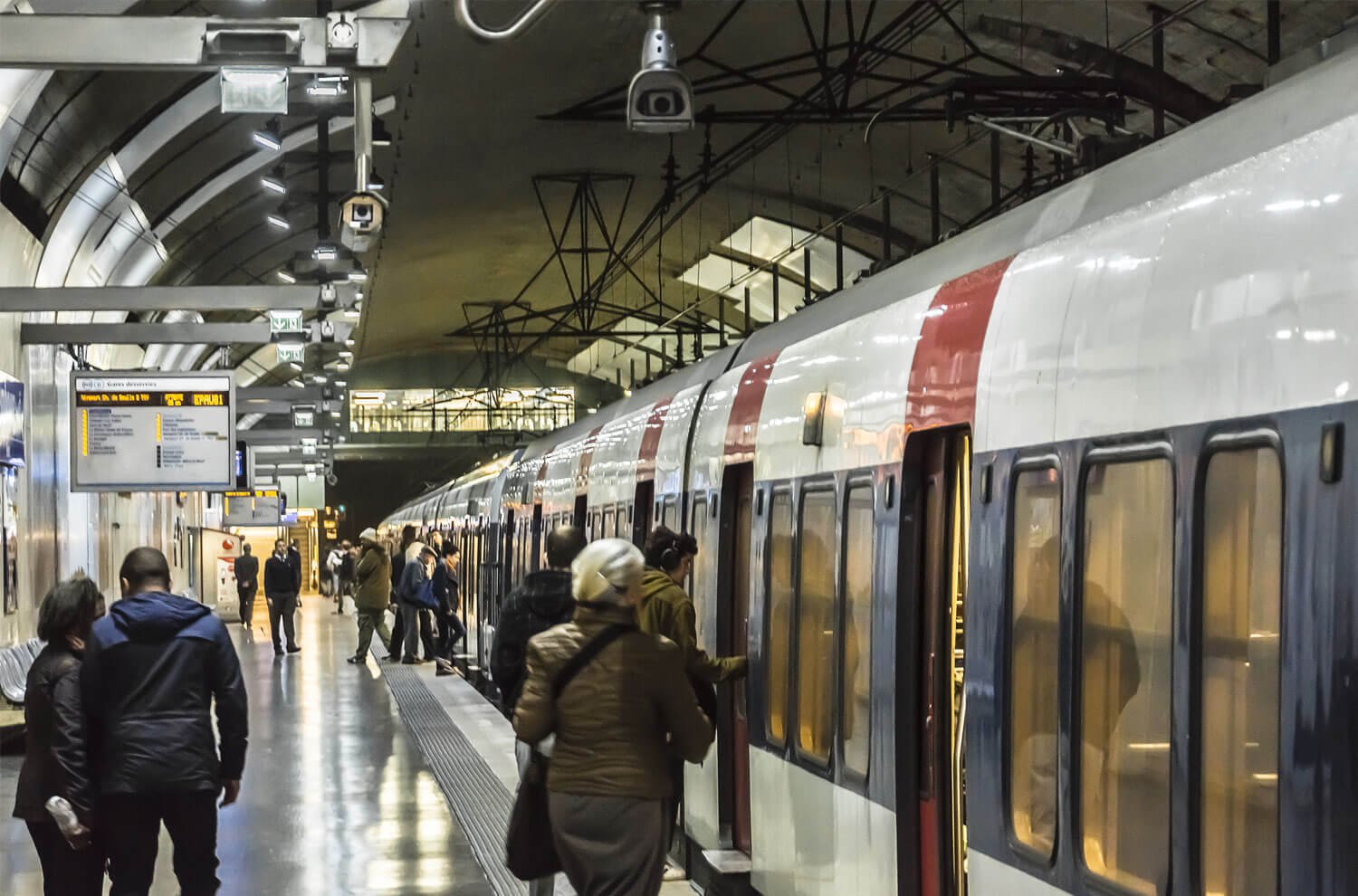
There are 16 Métro and five RER (Regional Express Network) lines crisscross Paris and the suburbs. You are never more than 500 meters away from the nearest station. The Métro network is interconnected at several points in Paris with the RER which are essentially long distance commuter trains on their way from the city centre to the suburban areas. These RERs are faster because they do not have frequent stops like the Métro. If you are planning on a longer journey passing through several arrondissements, then RER trains could be considered. The same tickets are valid for Métro and the RER trains.
Before starting your journey, it is most important to know the last stop of the line you take as it is this name that will appear on all information signs. A visit to the RATP website (ratp.fr) will help you plan your journey in no time. They also have a very useful App.

Though you can purchase single tickets, a Paris Visite travel card is most likely your better option. The Paris Visitecard is available as a one, two, three or five-day pass and the card allows you to travel in Métroand the RER suburban trains, as well as on the bus and the tramway. The card costs anywhere from €6 to €65 EUR depending on your age, the number of days you need and the number of covered zones you’d like to travel within. The major sights in Paris are zone 1, but not Versailles which is in Zone 4. The single one-way tickets for travel on the Métro cost €1.70 EUR but you can buy a carnet of 10 tickets for €13.70 EUR at any Tabbac shop in Paris. The tickets can also be bought at Tourist Information Centres. You can also buy them at the Métro station either from a manned ticket booth (during regular working hours) or from a vending machine which is very user friendly and understands English.
The Métro runs from 5:30 a.m. to 12:30 a.m, Sunday through Thursday, and until around 2 a.m. on Fridays and Saturdays.
Bus
The buses have the route and the destination displayed in the front and the major stops marked on the side. The buses are painted green and white. The bus shelters have information on routes and the timetable of the buses stopping there. There are glass covered bus shelters if it serves multiple bus routes. Single smaller stops may just have a pole displaying the bus numbers.
There are 59 bus routes today that fan out throughout Paris servicing every street and corner of the city. Buses run every 5 to 10 minutes Monday through Saturday and every 15 minutes on Sundays and holidays. A single ticket will take you anywhere in the city and is valid for 90 minutes.
Most bus routes operate from 7 am to 8:30 pm though some do continue up to midnight. Past 8:30 pm you have an option to take the Métro till 12:40 am and thereafter you can use the Noctilien buses (Night bus) which operate every 10 – 60 minutes between 12:30 am and 5:30 am between Châtelet, major train stations, and nearby suburbs. You can hail the night buses anywhere on their route.
The flip side of the Métro map has the bus map and it is available at all Métro stations, bus stops, RER stations and tourist information offices. The present stop and the upcoming stops are announced by a recorded voice as well an electronic display board inside the bus. If you need to get off the bus, the passenger has to press the red button on the hand poles and once the bus comes to a standstill, exit through the rear or middle door only. The front door is for ingress only.

From April through September, the orange and white coloured Balabus, runs from 1:30 pm to 8:30 pm and provides a 50-minute eye-catching journey of the major sights in Paris. The route runs from La Défense to the Gare de Lyon.
Trams
Trams and buses accept the same tickets as the Métro.
PLACES OF INTEREST
Eiffel Tower
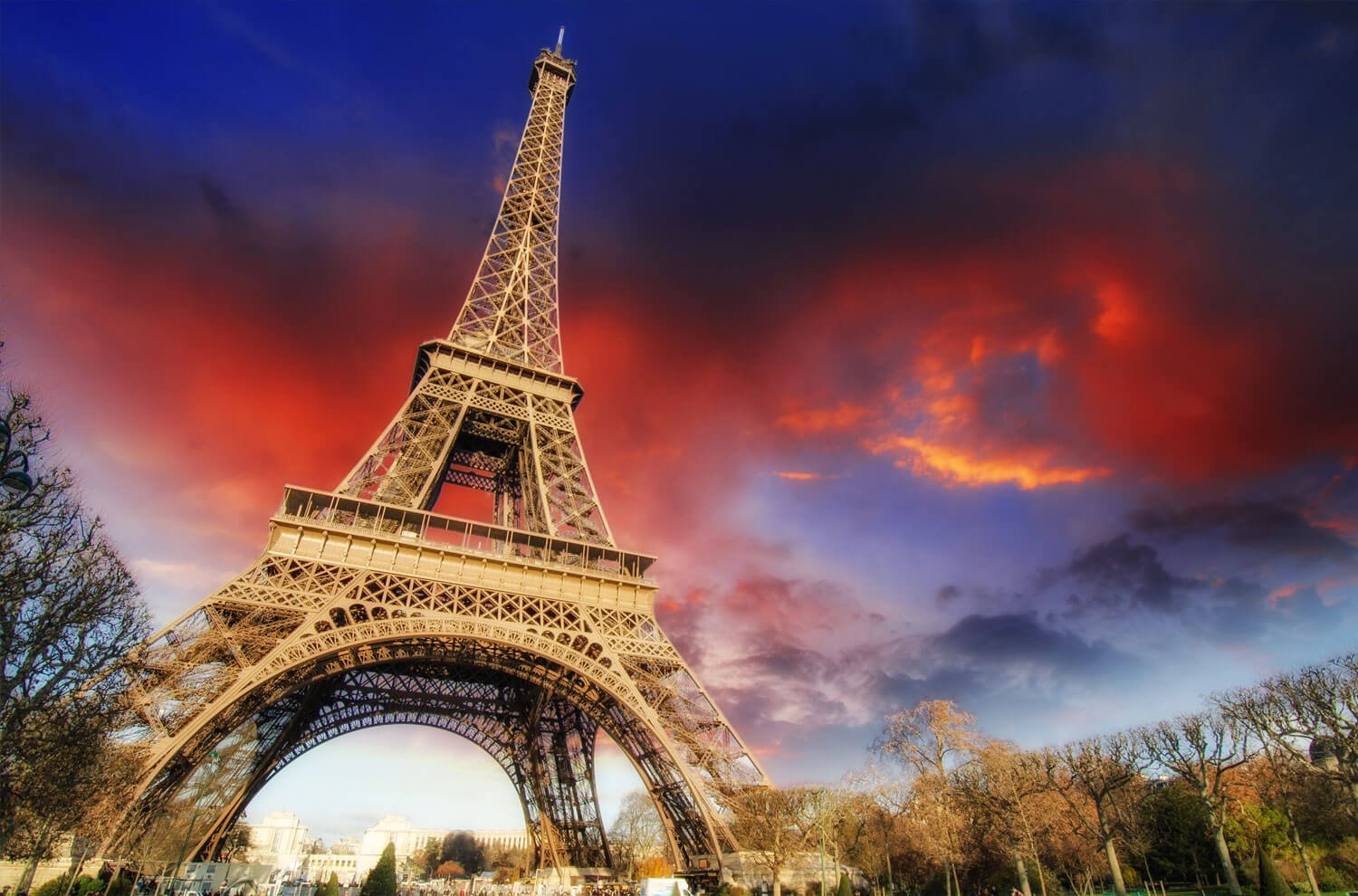

The tower has three levels and are open to the public from where you catch a spectacular view of the Paris. The tower is the number one attraction in Paris and is visited by at least 7 million people each year.
If you wish to view the wonderful spectacle of Paris at night, plan your Eiffel tower visit at night when the tower is bedecked in golden lights. Also, on every night, on the hour, thousands of flickering lightbulbs sparkle providing a surreal experience to the beholders.
The nearest Métros to the Eiffel Tower are Bir-Hakeim, Trocadéro or EcoleMilitaireMétro stops, serviced by lines 6, 8 and 9. But if you have never seen the Eiffel Tower in real before, then most dramatic perspective will be to take the Métro to Trocadéro. Once you climb the steps out of the Métro, follow the exit signs to the Tower and voila the Tower presents itself dramatically once you turn the corner onto your left. It was indeed the most dramatic introduction to the Tower that I experienced on my first visit to Paris. This is also one of the most ideal places to photograph yourself against the backdrop of the Eiffel Tower.
The Tower is open on all days of the year from 9 am to midnight from June to September 01st and from 9:30 am till 11 pm during the rest of the year. The price of admission varies according to which level of the Tower you would want to visit and how old you are. Tickets for adults to the very top of the Tower cost €15. Cheaper tickets are available if you wish to have access only to the second floor or would want to climb up the stairs up to the second floor (704 steps to be precise). For those who are not that enthusiastic about the climb could still enjoy the view from the stairs while climbing down.
The Louvre
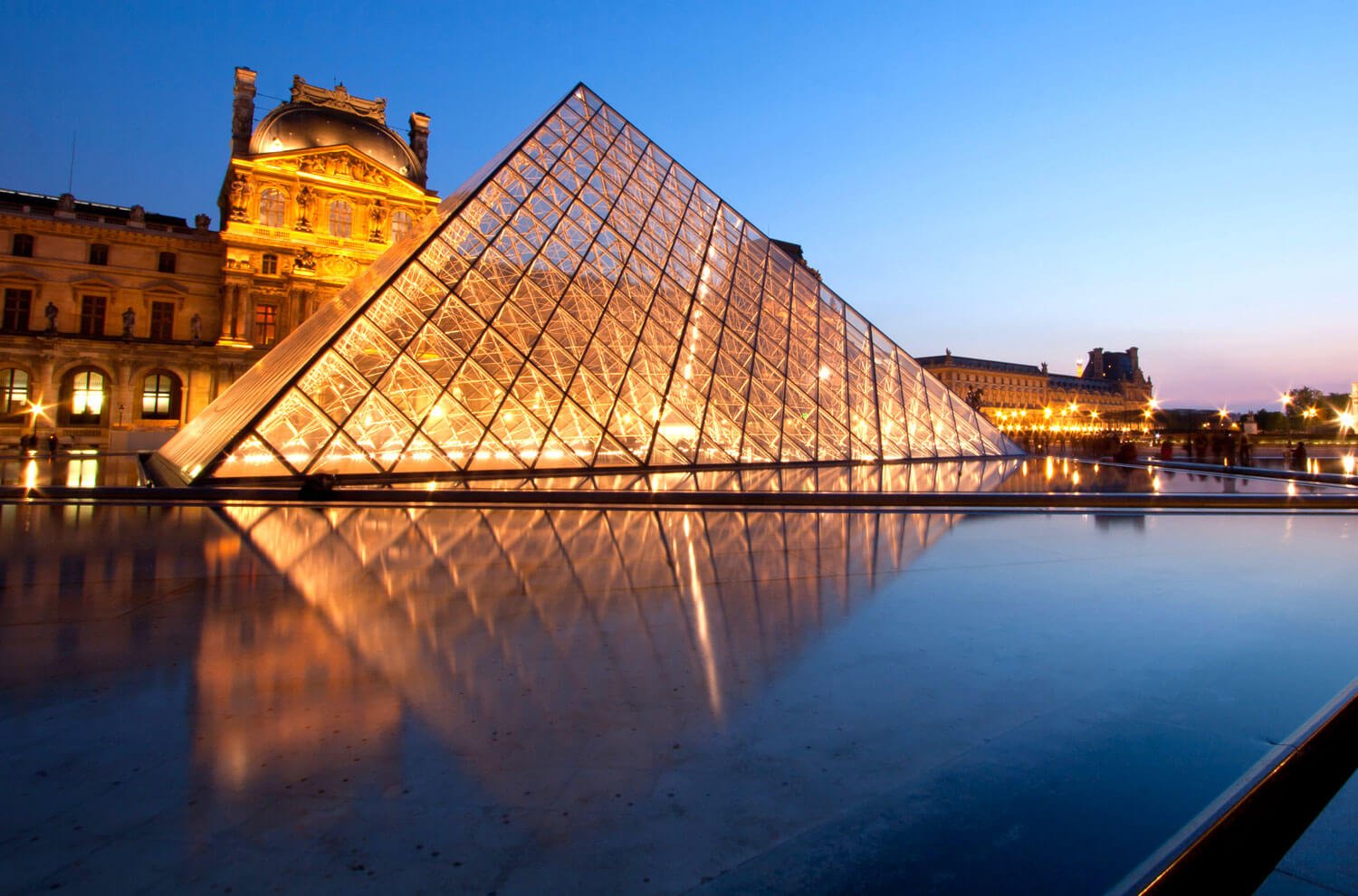
Unarguably, the most popular displays of art are the three grand dames, the enigmatic Mona Lisa, the curvaceous Venus de Milo and the seductive Winged Victory of Samothrace who with her arms wide open, windblown clothes that are wet with the sea spray and sticking close to her svelte navel, would not have looked one bit out of place in a rain dance sequence in Bollywood movies, but for the fact that she is headless.
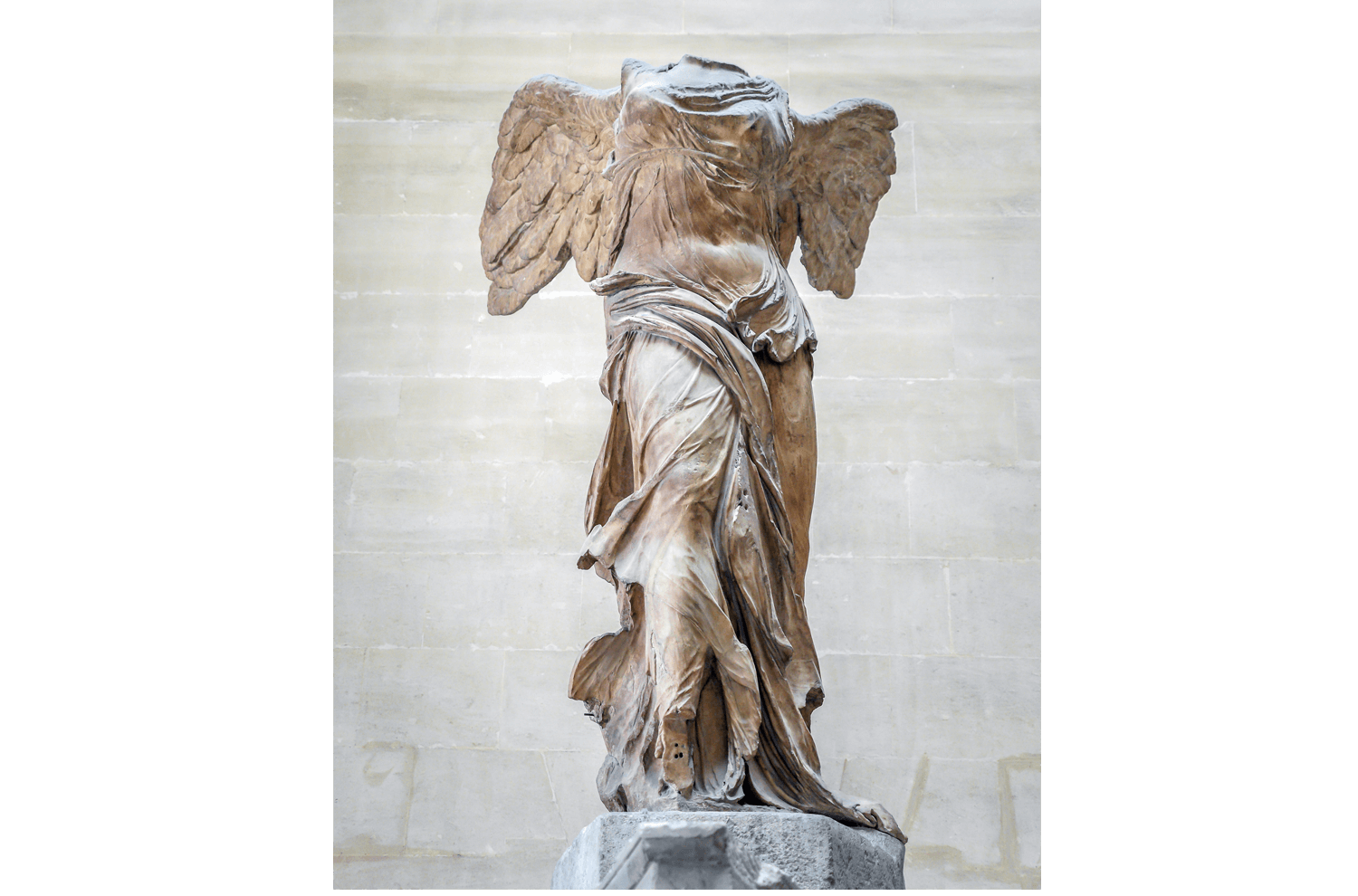
The Renaissance works on display include Michelangelo’s Slaves, Leonardo da Vinci’s Virgin of the Rocks, works of Raphael, Botticelli and Titian. The French masterpieces of the 19th century on display are Ingres’ La Grande Odalisque, Géricault’s The Raft of the Medusa, and the work of David and Delacroix. Many new galleries have been renovated and are open to the public after the Grand Louvre project carried out for the rejuvenation of the museum. Booking tickets in advance is strongly advised though it is a process with a twist. Even after entering the digital age long back, The Louvre has not really accepted the fact that crowd management can be achieved by online ticket sales. Online booking is currently done by third party vendors and you need to pick up these tickets from the vendor location before arriving at the Louvre. Else, you can buy them through the Paris Tourist office online and they will mail the tickets to you (at a cost) worldwide or deliver the tickets to your hotel. You can also collect them at no extra cost from the Paris Convention and Visitors Bureau at 25 Rue Des Pyramides
In case you happen to visit the Louvre without an advance ticket, the sure shot way of avoiding lines are by taking the entrance of the Carrousel Du Louvre, which is the underground shopping mall. Here you can buy your Louvre from automatic vending machines. The mall itself will come in handy as it has a huge food court where you can whet your appetite after a crash course in art history at the Louvre.
The museum is open Mondays, Thursdays, and weekends from 9 a.m. to 7:30 p.m., and on Wednesdays and Fridays from 9 a.m. to 10 p.m. The Louvre is closed on Tuesdays. The museum is located in the city centre, serviced by the Nos. 1 and 7 Métro lines.
Arc de Triomphe
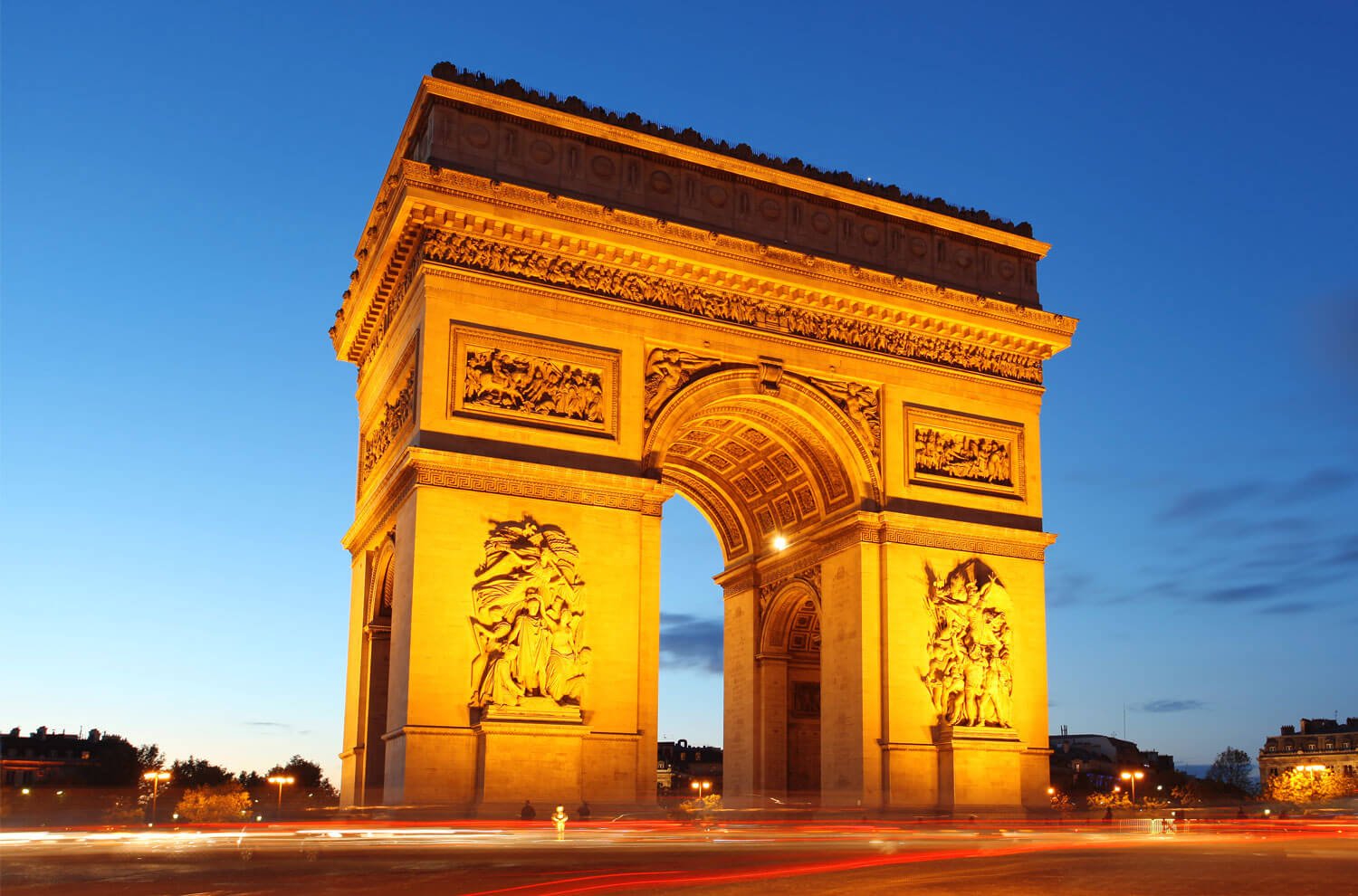
Napoleon who was inspired by the Arch of Titus in Rome, ordered the construction of this 164-foot tall colossus. Napoleon had considered himself the torch bearer of the Roman emperors and considered himself to be one of them and felt the needed of a monument to showcase his military conquests. He wanted the Arc De Triomphe completed to form the backdrop to the military parade planned for his wedding in 1810 to his bride Marie- Louise, but unfortunately fate did not favour him. The monument was an embarrassment as it stood only a few feet high at that the time of the wedding. To add salt to his wounded pride, he never saw it finished as the monument was only completed in 1836, a good 15 years after Napoleon’s death. There is a small museum at the site that recounts the history of the monument.
All the wars fought by France, with the names of the generals involved, are written on the arch. It is also the Tomb of the Unknown Soldier, which commemorates soldiers who sacrificed their lives in World War I.
The arch is so large that a pilot flew his biplane through it after WW I. It stands 160 feet (50m) tall, 148 feet (45m) wide, and 72 feet (22 m) deep.
Sacre-Coeur

The highlight of Sacre Coeur is the spectacular view of Paris from the top of the 270 feet dome. If you wish not to climb up the dome, you will still be presented with an equally mesmerising view of the city from the steps in front of the basilica. The interior is also equally resplendent with a huge mosaic of Christ with outstretched arms and a golden heart enclosed by devotional statues including those of the Virgin Mary and Joan of Arc. There are also depictions from the bible in the arches inside the crypt of the basilica and also on the stained glass windows. . Also remarkable is the huge bell of the basilica which is one of the heaviest in the world at 19 tonnes.
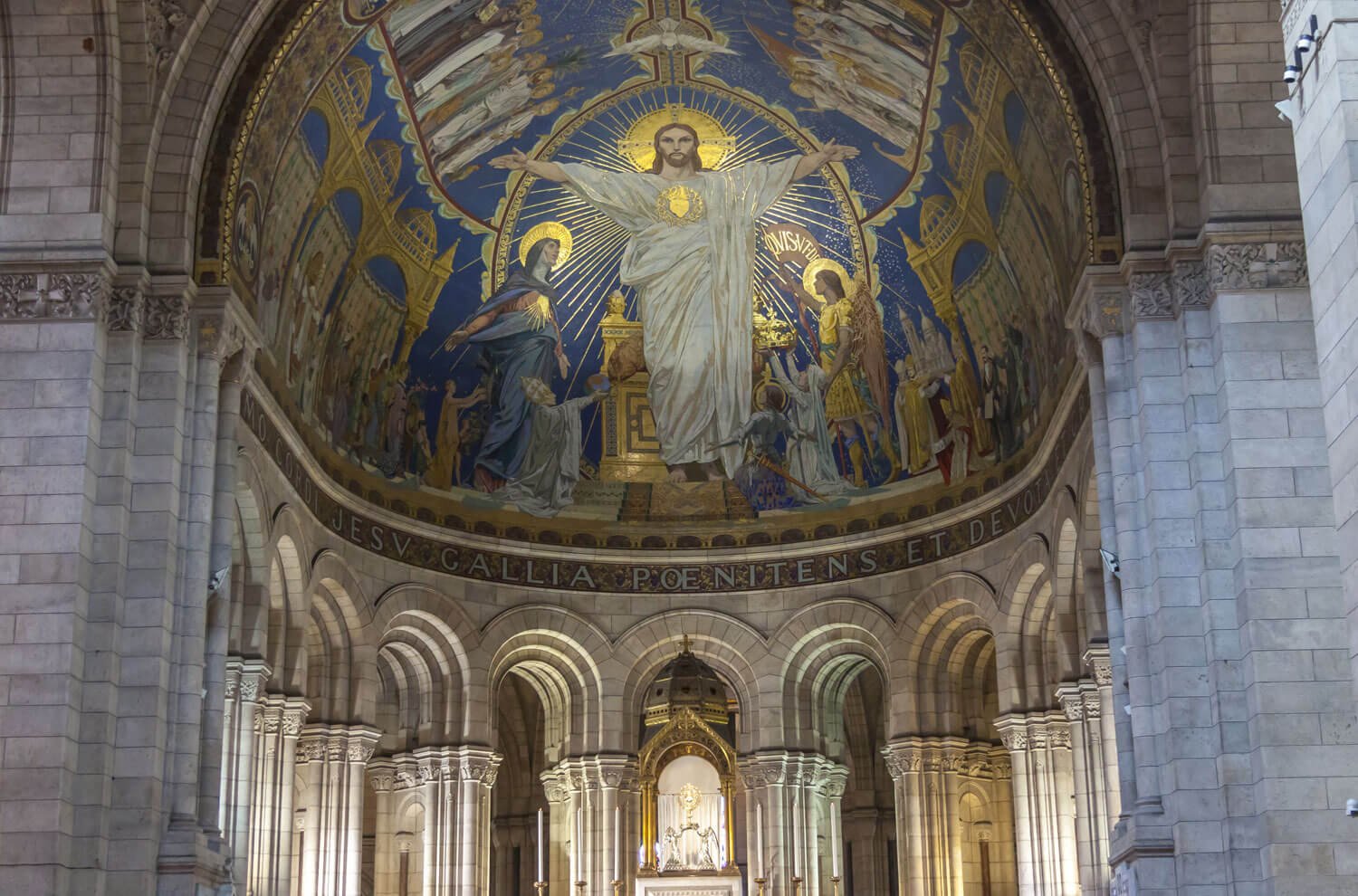
You should be aware that the basilica is sits upon a steep hill and it is a strenuous climb for those who are not fit and healthy. Alternately, there is a funicular or a circular route bus costing a Métro ticket each that would help you avoid taking the steps.
The basilica’s neighbourhood, Montmartre, is one of the most colourful areas of Paris and a walk around this village is a must with its quaint cobbled alleys brimming with artists, musicians, souvenir shops and even its own vineyard which brews wine even today..
Jardin du Luxembourg

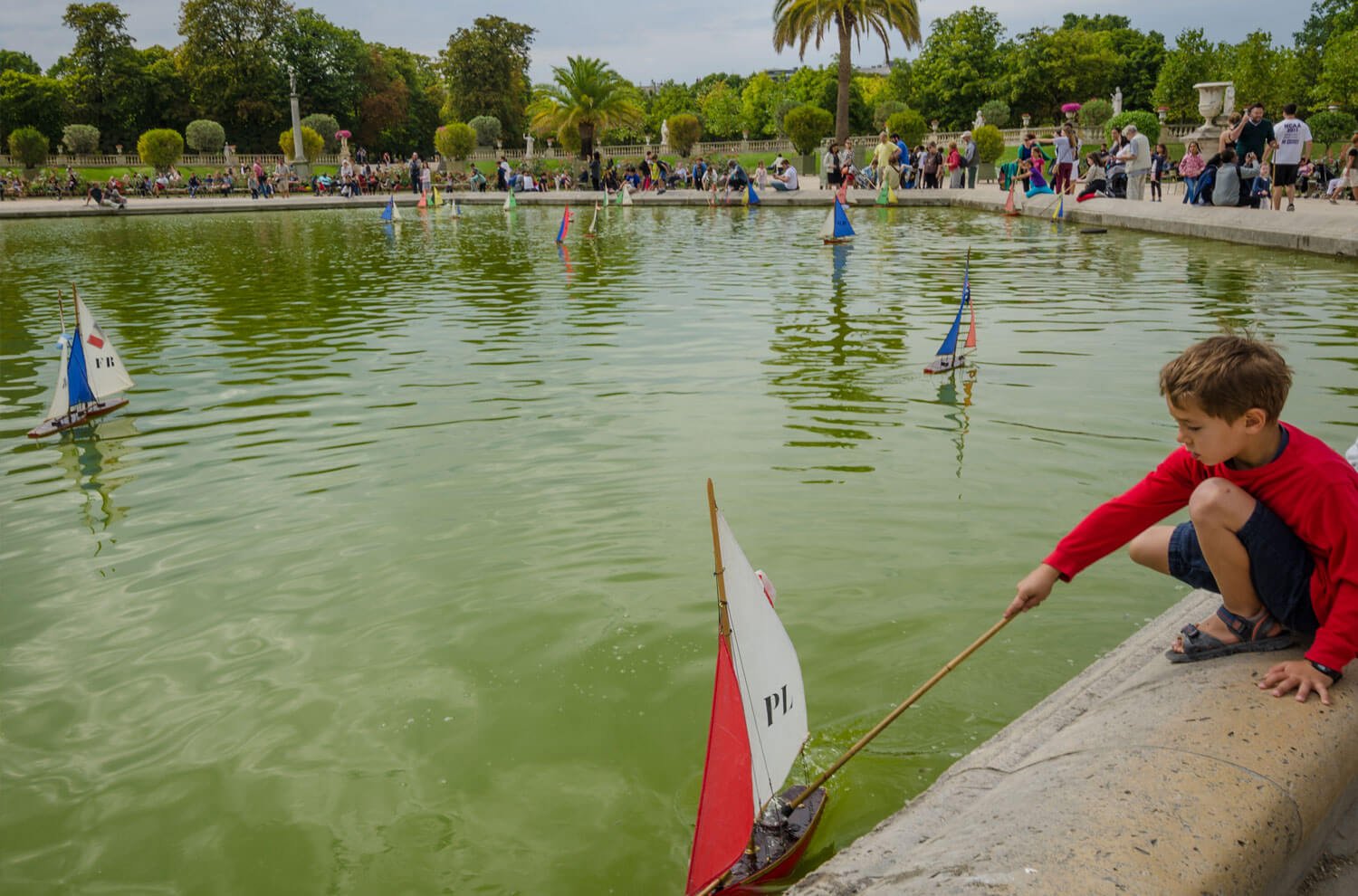
The garden has over 100 statues, several monuments, fountains, and around twenty figures on pedestals of French queens and famous women. You will also find a miniature of the Statue of Liberty which was installed here in 1906.
Musee d’Orsay
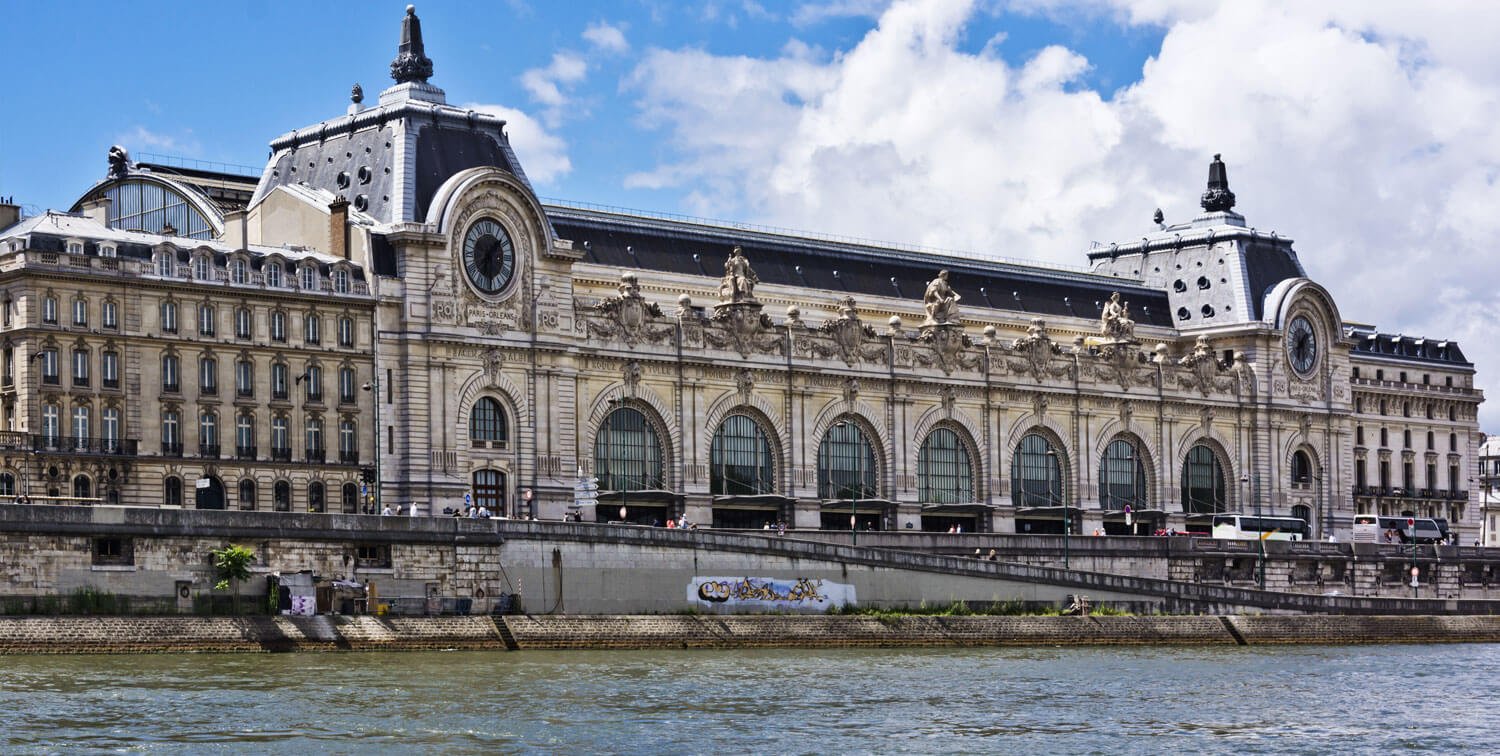
If you want to see all the art work in a chronological manner, begin your visit in the ground floor, then go to the top floor using the escalator and then end your visit in the second floor. If you want to the great masters only, then go straight to the top most floor and the walk your way down. There are English audio guides and museum maps available to plan your museum visit.
On the ground floor you will find works of great masters like Delacroix and Ingres in addition to early works of Manet and Cézanne.
The second floor has wonderful sculptures and Art Nouveau decorative furniture. Some of the works include rare surviving works of Hector Guimard, who also designed the green Métro entrances and is credited with introducing Art Nouveau to Paris. Unfortunately most of his works were destroyed. This floor also features exquisite glassware by Lalique and Tiffany.
The second floor also features art work of Postimpressionist masters Van Gogh and Gauguin and Neo-Impressionist works of Seurat and Signac.
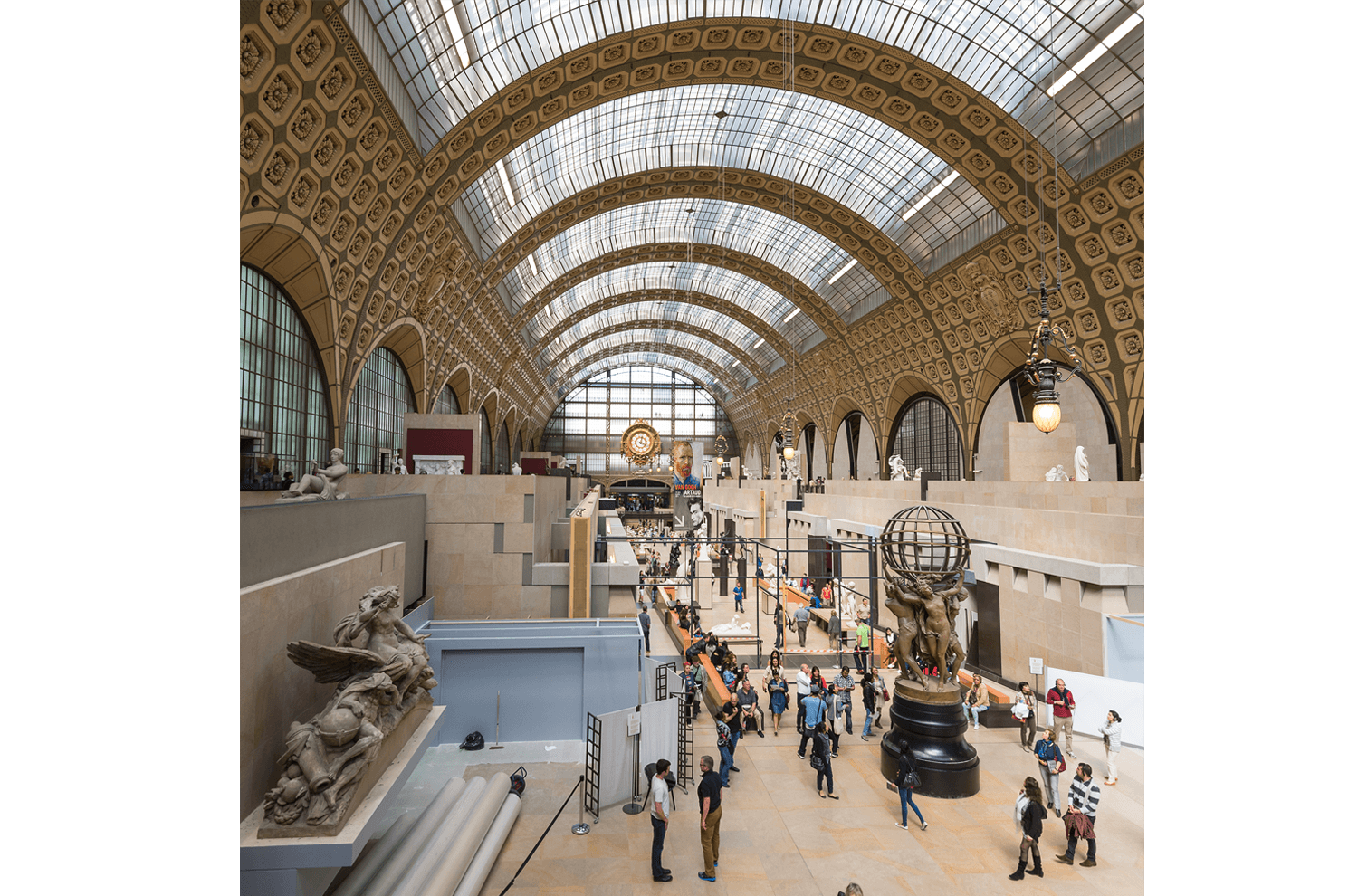
You are also rewarded with a magnificent view of the Sacré-Coeur Basilica if you take the effort to climb up to the museum’s top most balcony, a true symbol of a Parisian era that set off the Impressionist movement.
Musée d’Orsay is infamous for it huge crowds and long lines. Booking online could be a good option or you could use the Museum Pass and go directly to Entrance C.
General admission charges is €11per person. The museum sits directly across the Louvre and is best accessed by either the Métro (Line 12) or the RER C which are close by. The museum is open on al days except Monday (Louvre is closed on Tuesdays) from 9:30 a.m. until 6 p.m. and until 9:45 om on Thursdays.
There is a cafeteria at the ground floor as well as the top floor.
Notre Dame Cathedral
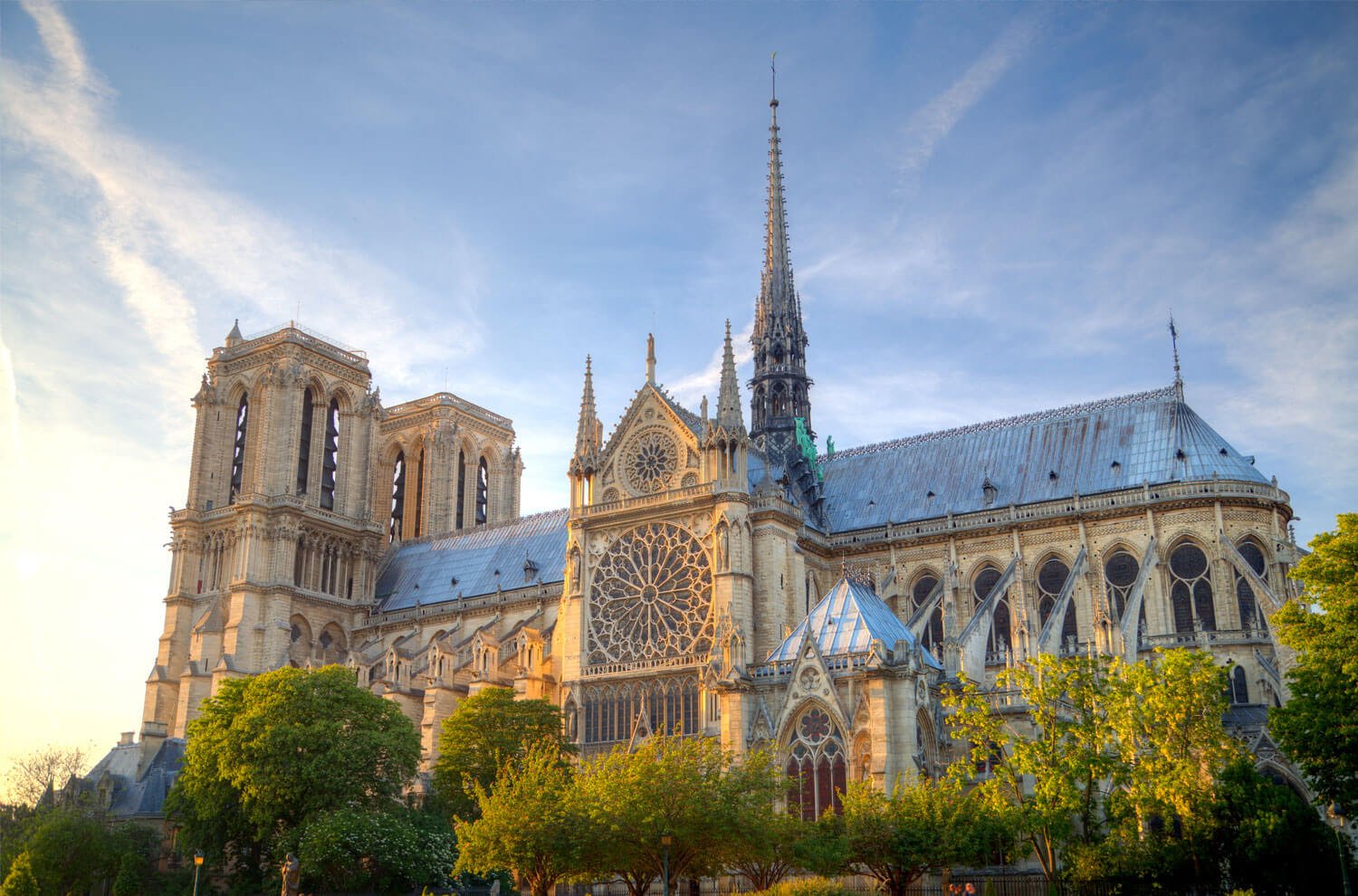
The highlights of the church are on the exterior with extraordinarily detailed architecture and the famous and iconic gargoyles. With the capacity to hold over 6,000 people, the cathedral’s impressive interior has beautiful rose windows, and is a sample of magnificent medieval engineering
Though the construction of the church began in 1163, it was not completed till 1345. During the French Revolution,it was badly damaged, but was duly restored in the 19th century by architect Eugène Viollet-le-Duc. The façade of Notre-Dame and the architectural beauty has no competition and the interior lights up resplendently when light enters through the rose glass panes from the west side.
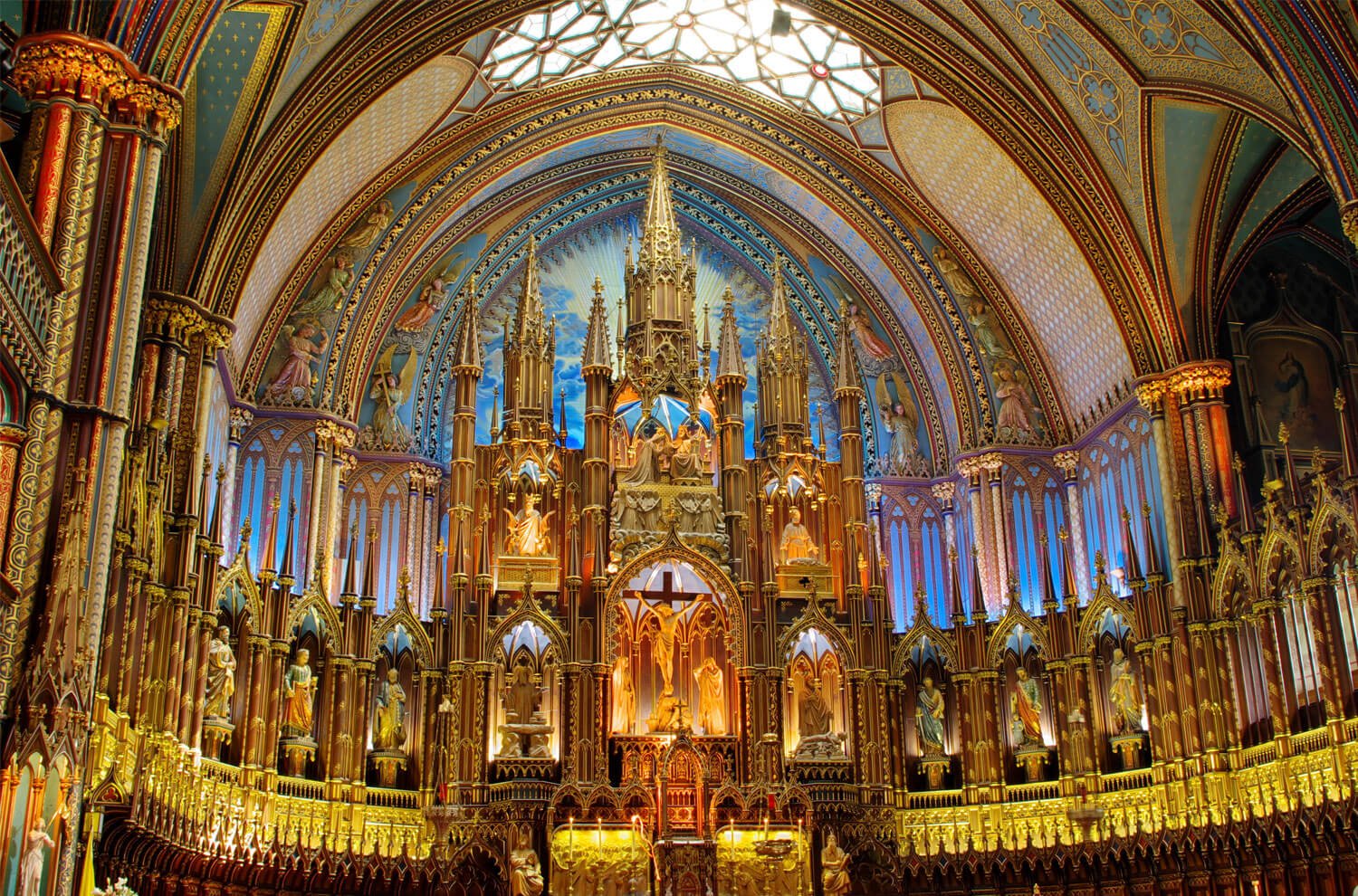
There is also an archaeological museum that has access through stairs in front of the church where you can have a peep into how life was in the city during the 1st Century when it was not called Paris but was a Roman town called Lutetia.
The entrance to the towers is to the left of the cathedral when you face the building. From the tower, a panoramic view of the city and the famed gargoyles too can be seen.
Tuileries Garden
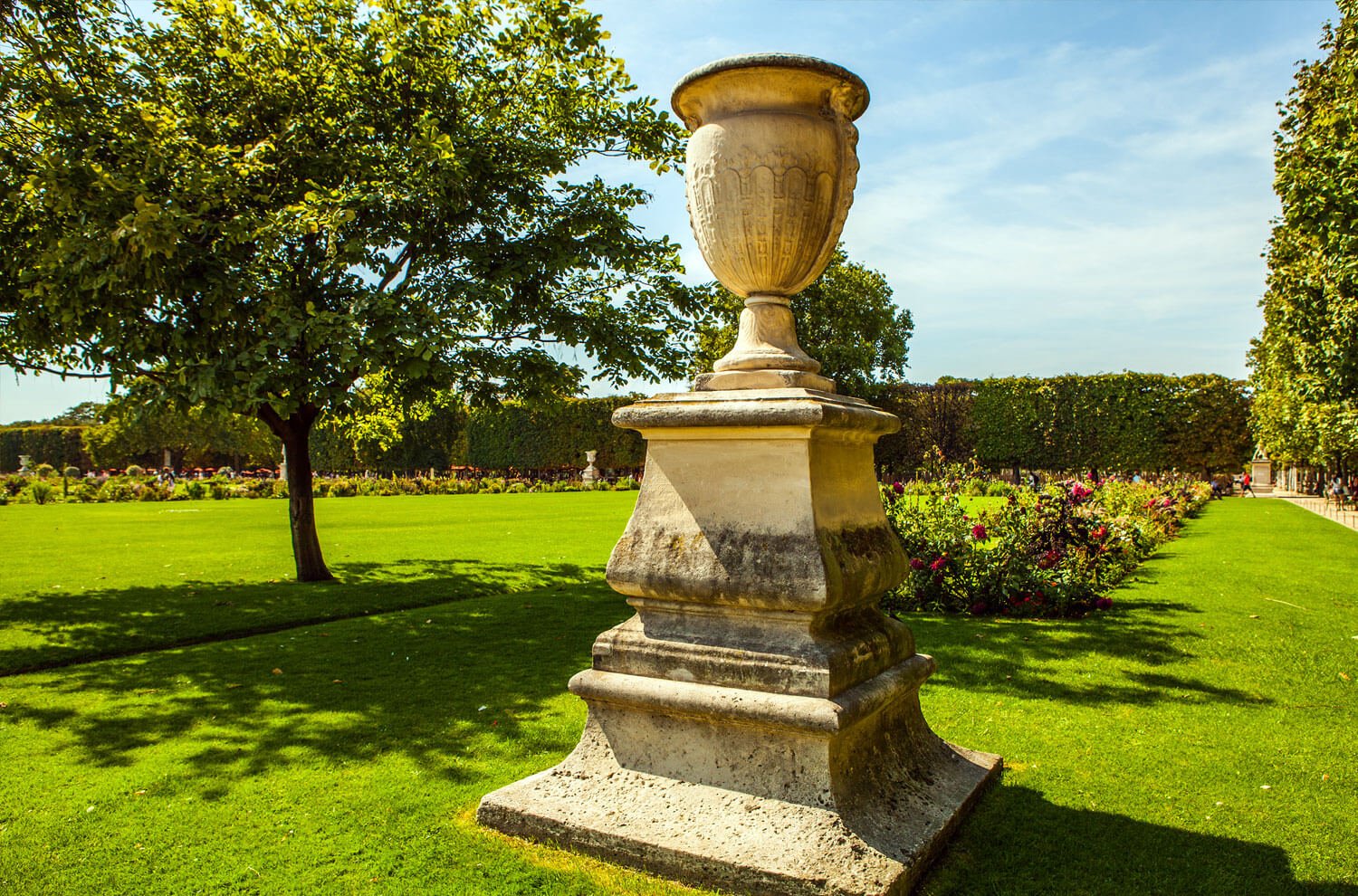
The Impressionists loved the Jardin because the usallygray and overcast sky provided a contrasting picture to the greenery making it look greener. Famous Impressionists like Monet and Renoir have captured the beauty of the Jardins in its glory in several of their canvases
The garden still provides one backdrop for one of the most beautiful walks in the city and more importantly it is bang in the middle of the blockbuster sights with the Louvre at one end and the Place de la Concorde at the other. Across a foot bridge from the centre of the garden one can reach Musée d’Orsay a few hops and steps away and then the Eiffel tower which is leisurely half an hour walk by the Seine side.
Kids will love The Tuileries as they have plenty of space to run around and release the unspent energy conserved touring boring museums. In fact it is one of the best places to take the kids as there is also a carousel, Ferris wheel, trampolines and also an amusement park in summer, not to mention carts selling delicious gelatos and sandwiches.
Place de la Concorde

It was originally named Place King Louis XV as it was here that a huge statue of the king was erected after he miraculously recovered from a severe illness. During the French Revolution, the square was renamed Place de la Révolution and a statue of liberty was installed. The square was one of the decisive and macabre theatres of the French Revolution where blood thirsty crowds shouted “off with their heads” as Louis XVI and Marie-Antoinette were reduced by a foot in height from the top, as were almost another 2,500 people, using a custom made tool called the guillotine. In a twist of fate a year later, the leader of the Revolution, Robespierre, would be meted out the same punishment.
The square was again renamed in 1836 as Place de la Concorde and a 75-feet tall Obelisk of Luxor, a gift from Egypt in pink granite and weighing approximately 230 tonnes, quarried in 8th century, was installed as a centrepiece, perhaps to provide a diversion from the grotesque memories that were associated with this place.
This huge square at eight hectares is octagonal in shape and is the largest square in Paris. Each octagonal corner has a statue representing a French city namely Bordeaux, Brest, Lille, Lyon, Marseille, Nantes, Rouen and Strasbourg. There are also two fountains in the square, ‘La fontaine des Mers’ and ‘Elevation of the Maritime installed in 1836 and 1839. These beautiful bronze fountains were both designed by Jacob Ignaz Hittorf who had also redesigned the square.
Sainte-Chapelle
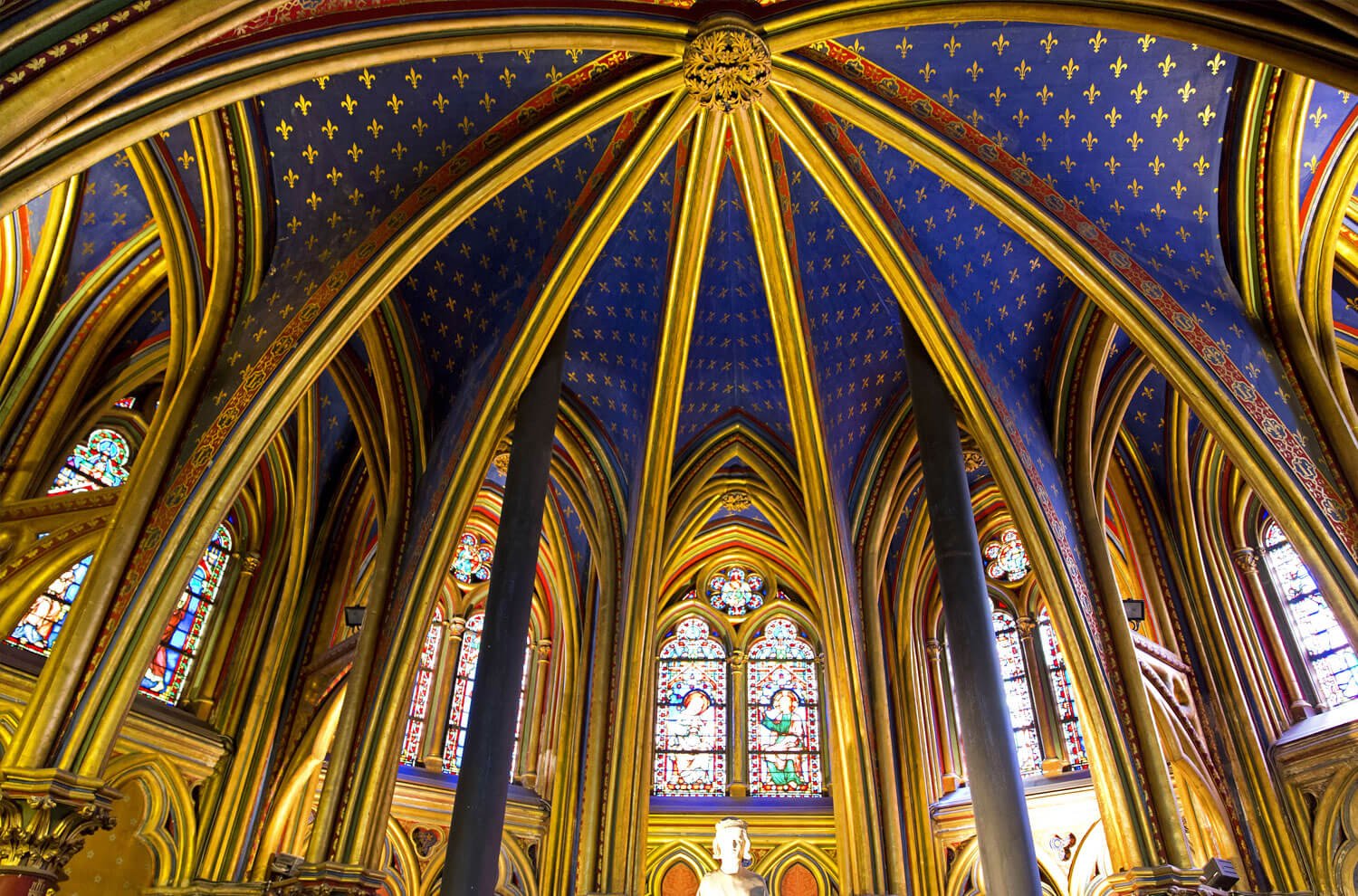
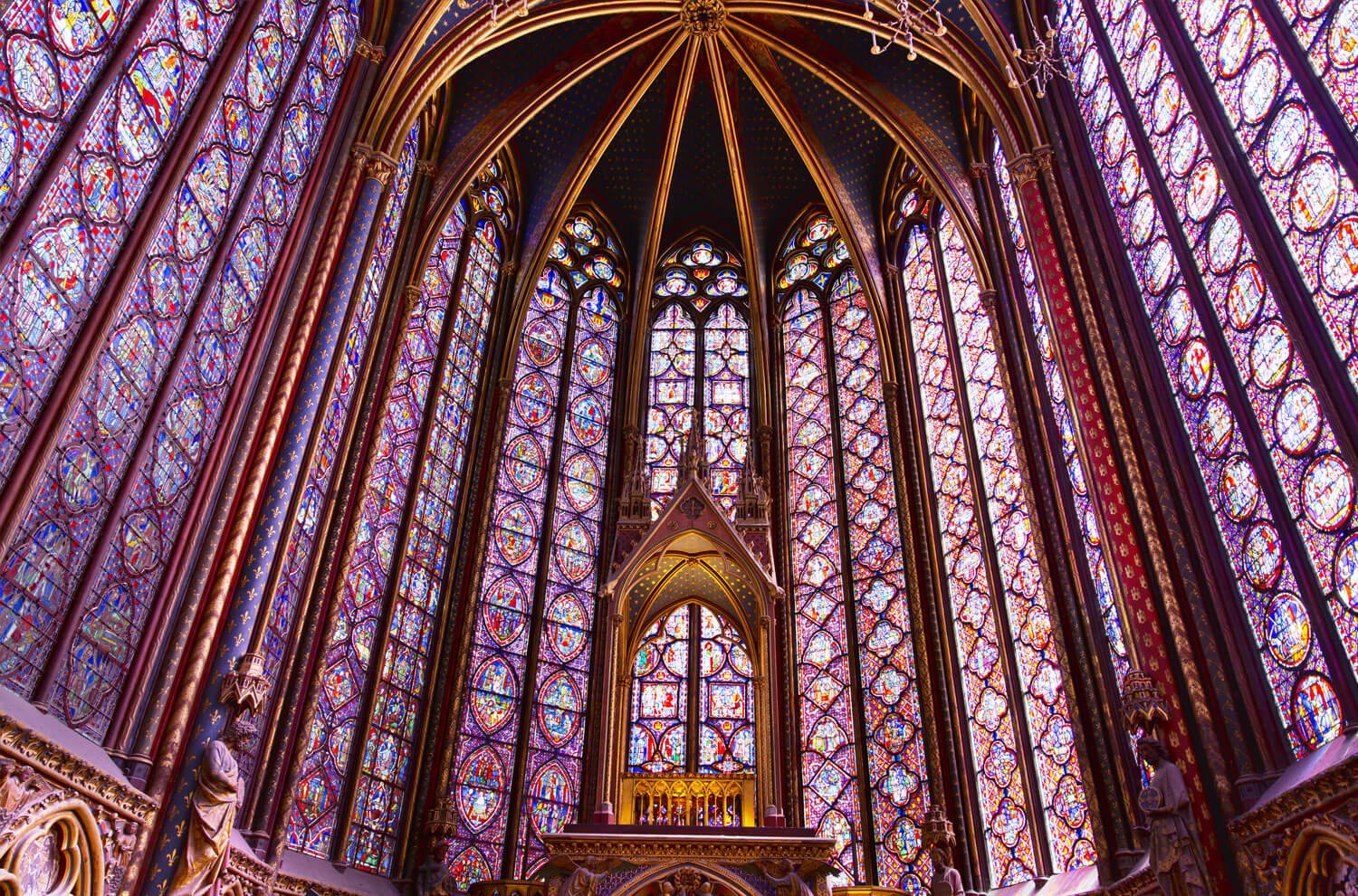
The stained glass feature almost 1,130 biblical figures depicted on 15 huge 50 feet high windows and apart from the glass, there are exquisite carvings on the columns and detailed figurines of apostles.
The glass stained windowsare best viewed during sunset on a clear sunny day to fully appreciate the magic of sunlight diffused – truly a Technicolor play on God’s first words – “Let There Be Light”.
Les Invalides
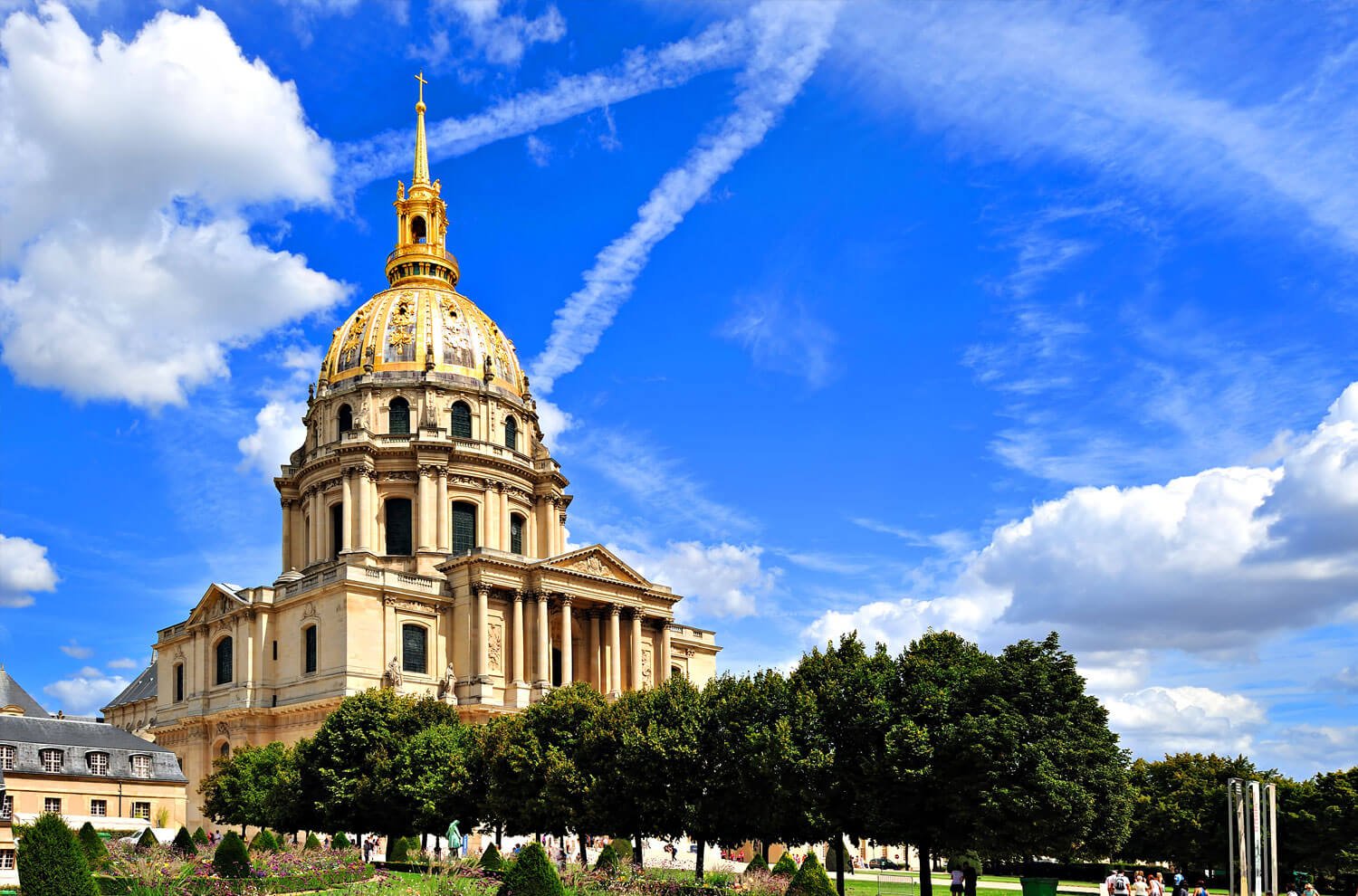
This facility was constructed at the behest of the Sun King, Louis XIV in 1670 to provide shelter for soldiers disabled in war and was once home to nearly four thousand soldiers, hence the name. There is still a hospital for veterans functioning currently out of its premises. The Musée de l’Armée also functions from this premises and contains an exhaustive collection of armours, weapons and other military artefacts.
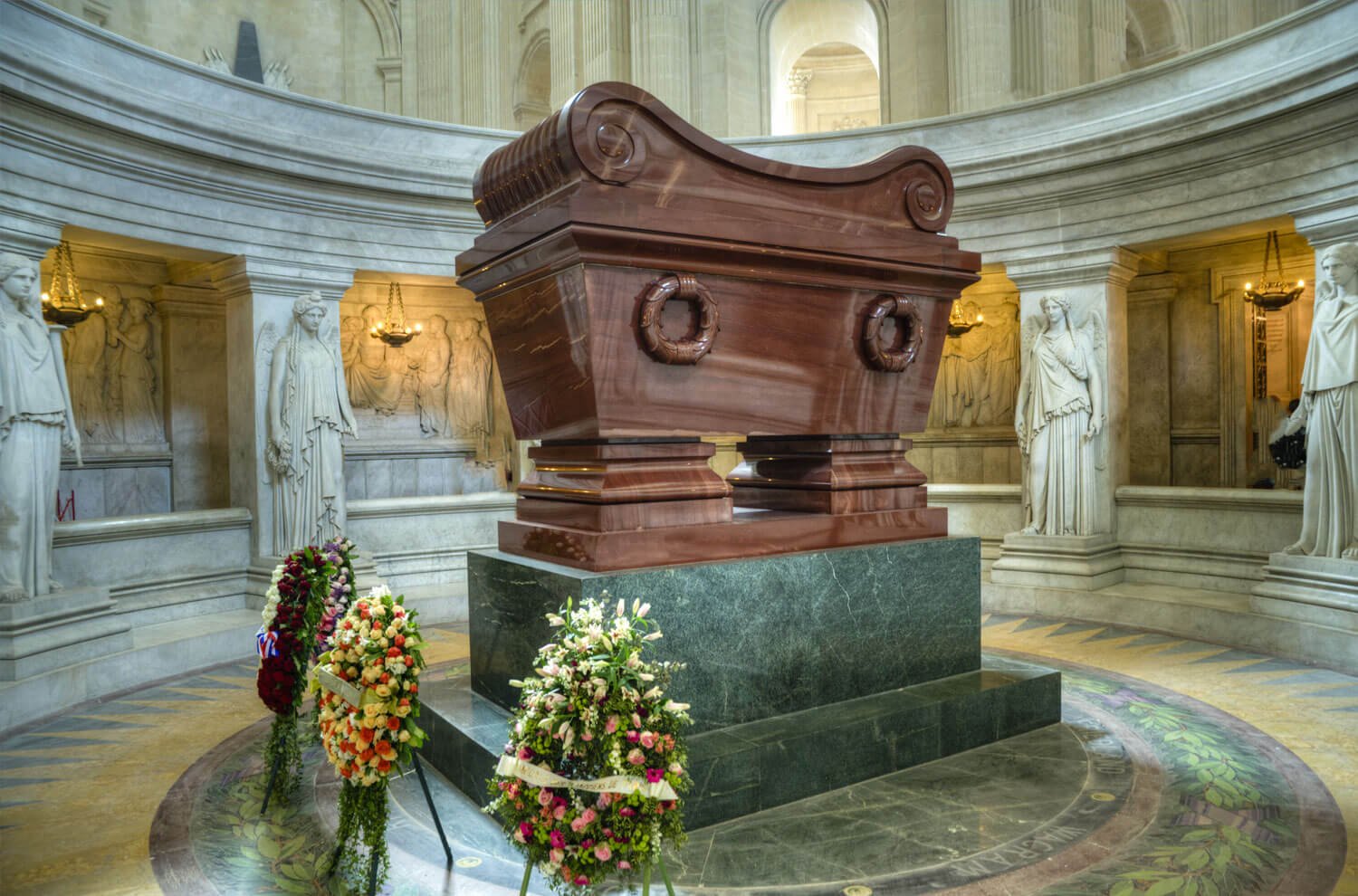
Versailles Palace

Make no mistake, this Palace has glitz, glamour and tragedy all rolled into one which is extrapolated by the in-your-face baroque architecture. Subtlety is not a virtue you will find in the Palace. This is the IMAX version of French history.
The reasons for the King to build this Palace away from the city are many, including his passion for hunting and the abundance of wild game in Versailles, and indeed, the origins of the Palace was as a hunting lodge, but the most acceptable one is that the distance away from the city was an insurance to keep the King safe from any civil unrest that could brew in Paris. Also, it would entail nobles to travel to Versailles and spend a considerable time away from the city, ensuring that they do not build up any regional power base of themselves. Apparently, the idea did work, at least during Louis XIV’s reign because he ruled France for an astonishing 72 years and so did it for his son Louis XV who ruled for 60 years. Unfortunately, the same cannot not be said about his successor, Louis VI. Staying so far and so long away from reality did,after all, have its consequences.
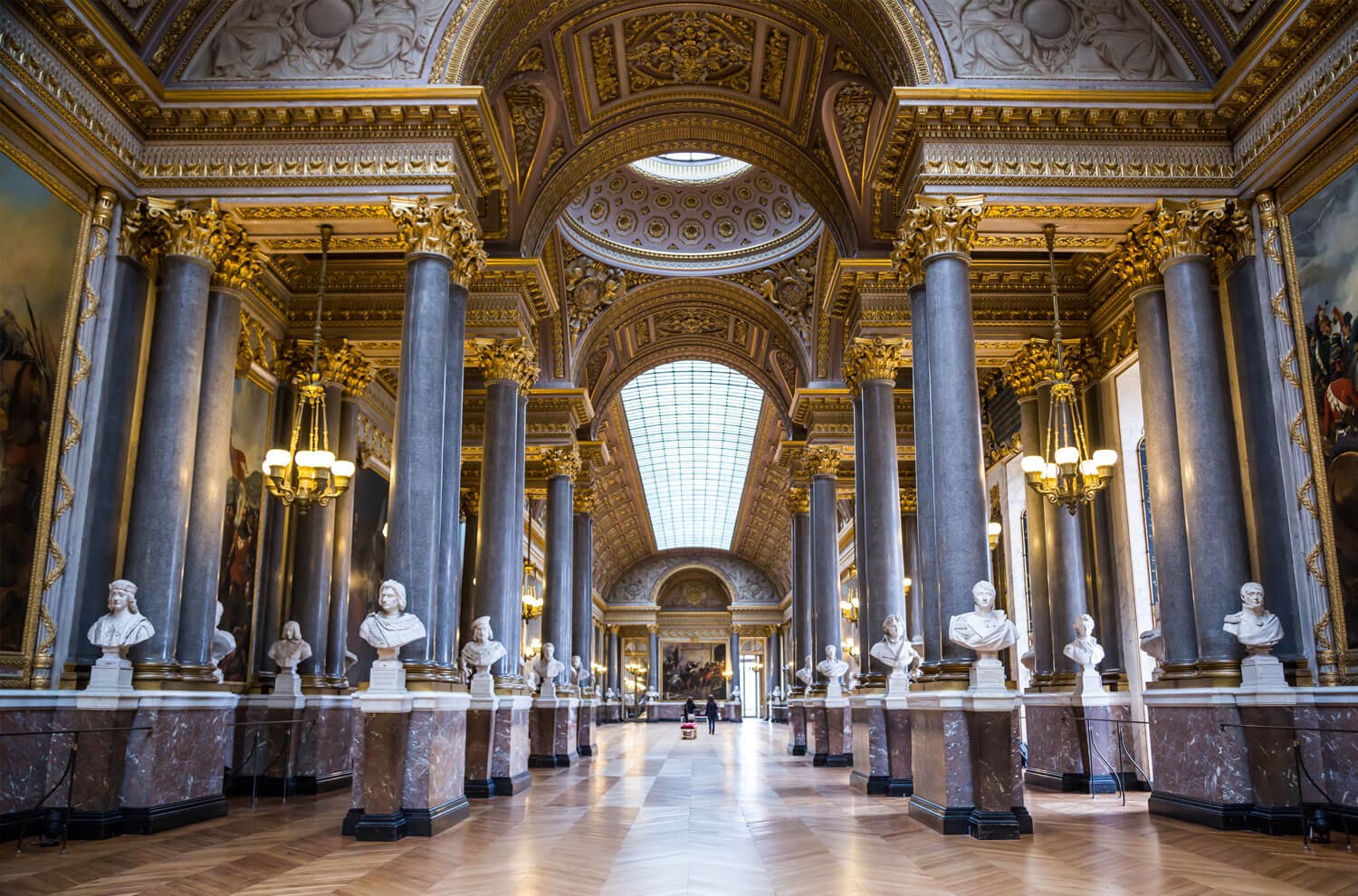
The building became so overwhelming to its inhabitants that even the successors of the Sun King could not relate or identify with the opulence and grandeur of the Palace. They started slowly building their own small palaces in the vast gardens, which would be more functional and could be called home. Louis XV and XVI chose to live and rule from these smaller Palaces inside the garden and far away from the monstrous building that had literally overshadowed their lives. The famous among these small Palaces are the Petit Trianon, constructed for Louis XV in a more classical way and within architectural proportions and more subtle than the Versailles Palace.
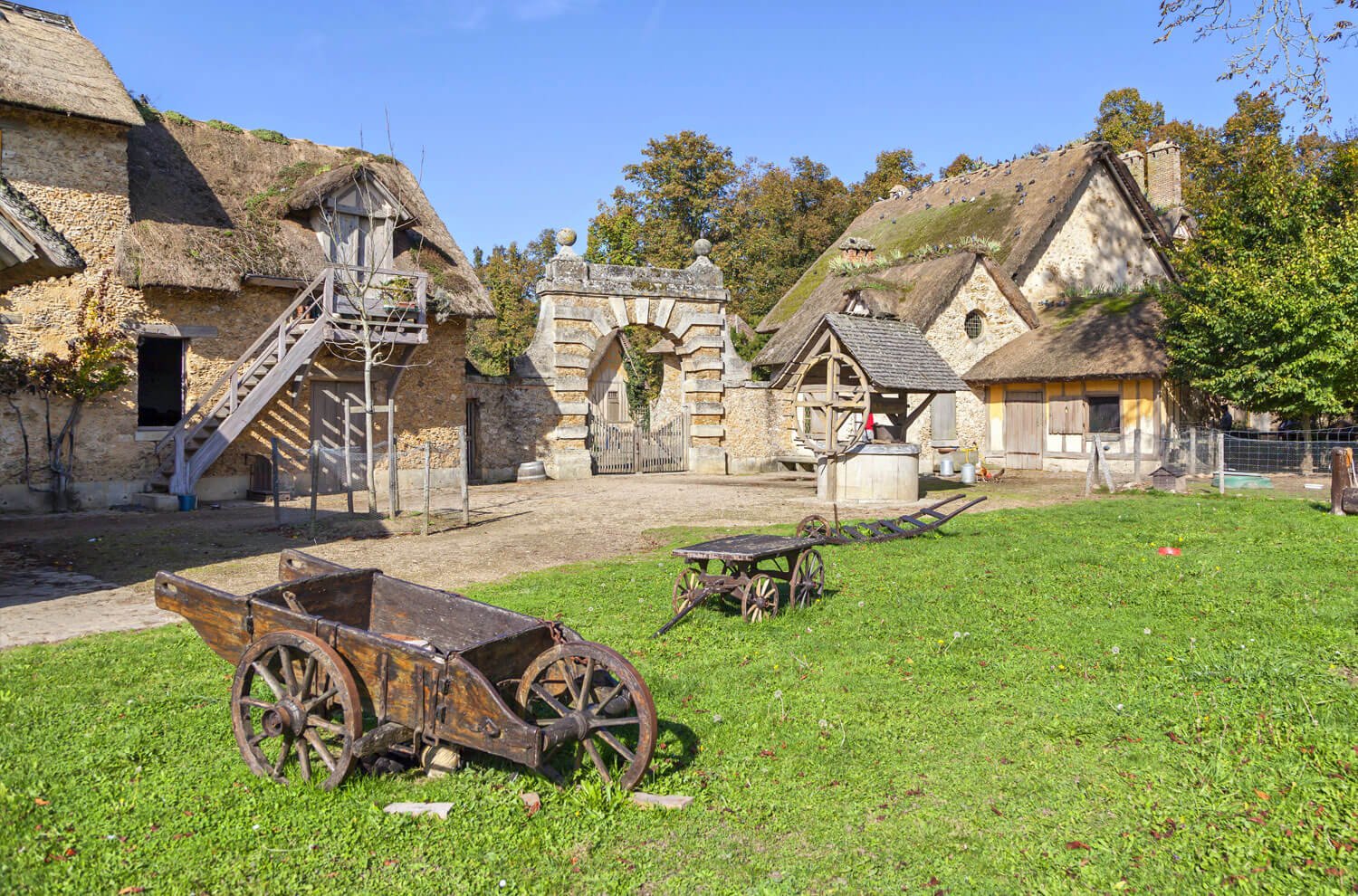
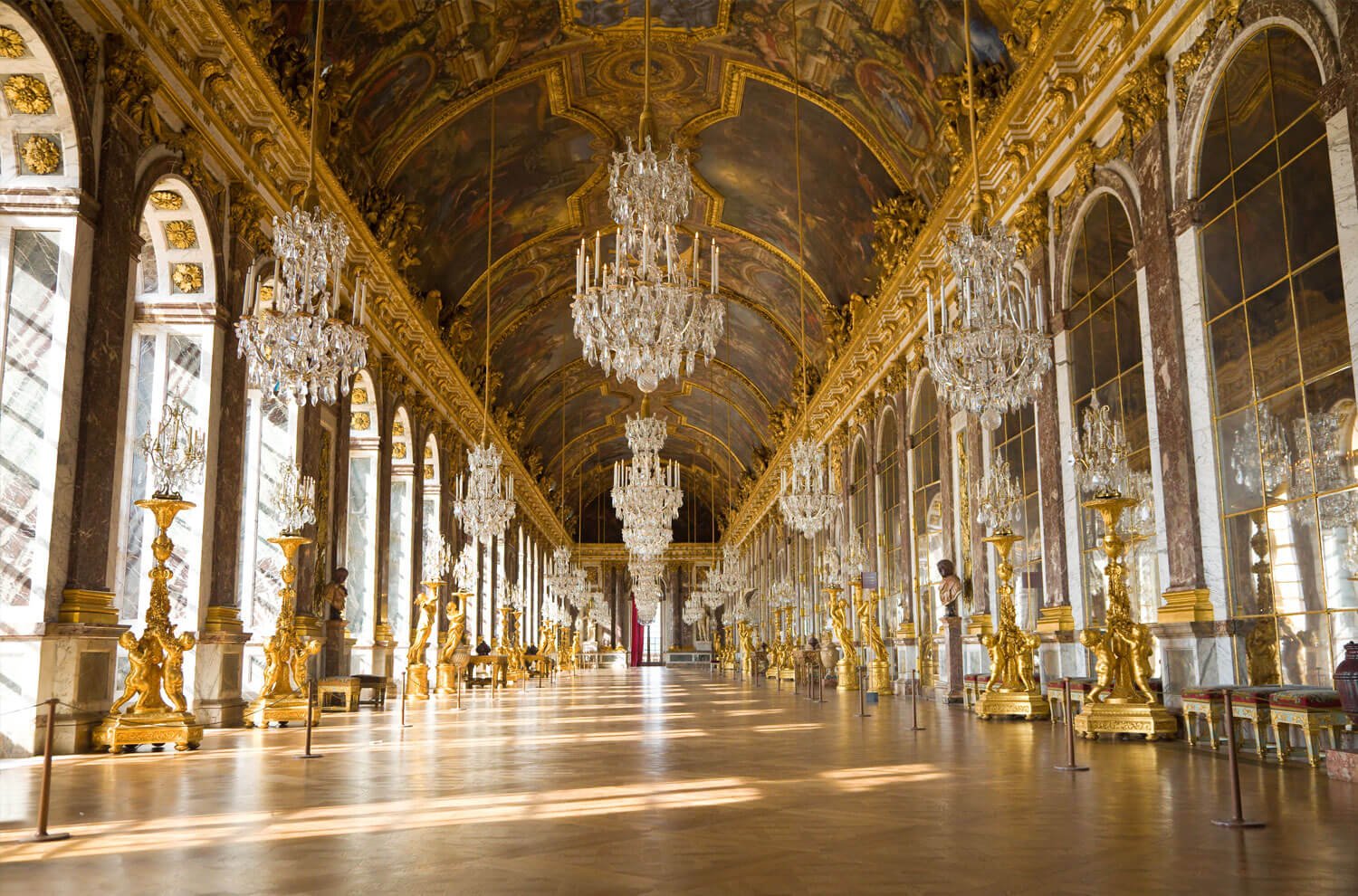
Other opulent settings include the Grands Appartements (State Apartments) with walls with top to down marble, exquisitely painted ceilings, parquet floors and four poster beds with plumes of ostrich feather. Compared to the lavishness and over the top settings of the state apartments, the PetitsAppartements (Private Apartments) where the royal families and their friends lived were more down to earth, lined with gold and white wood panelling in rococo.
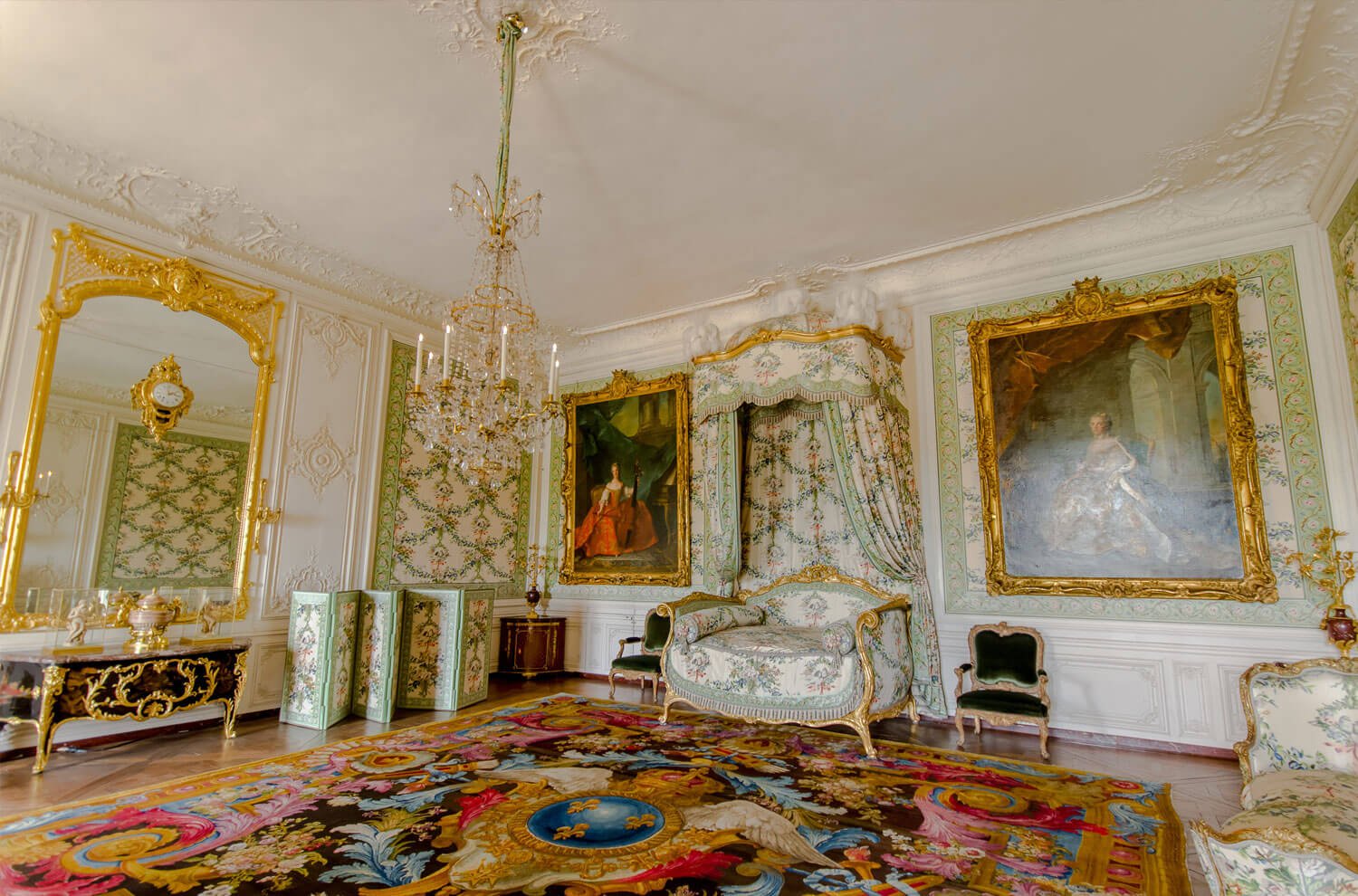
All this opulence fail in comparison to the Chambre de la Reine , the Queen’s bedroom, which was specially made for Marie Thérèse, the first and only official wife of Louis XIV, and should count among the most opulent bedrooms in the world. Equally extraordinary is the antechamber, Salon du Grand Couvert, where Louis XIV had his supper. This room was extensively restored over a period of 16 months including its extravagant wall and ceiling paint, woodwork and tapestries and it is the only private room of the Queen that can be seen exactly as it was decorated in the 1670s.
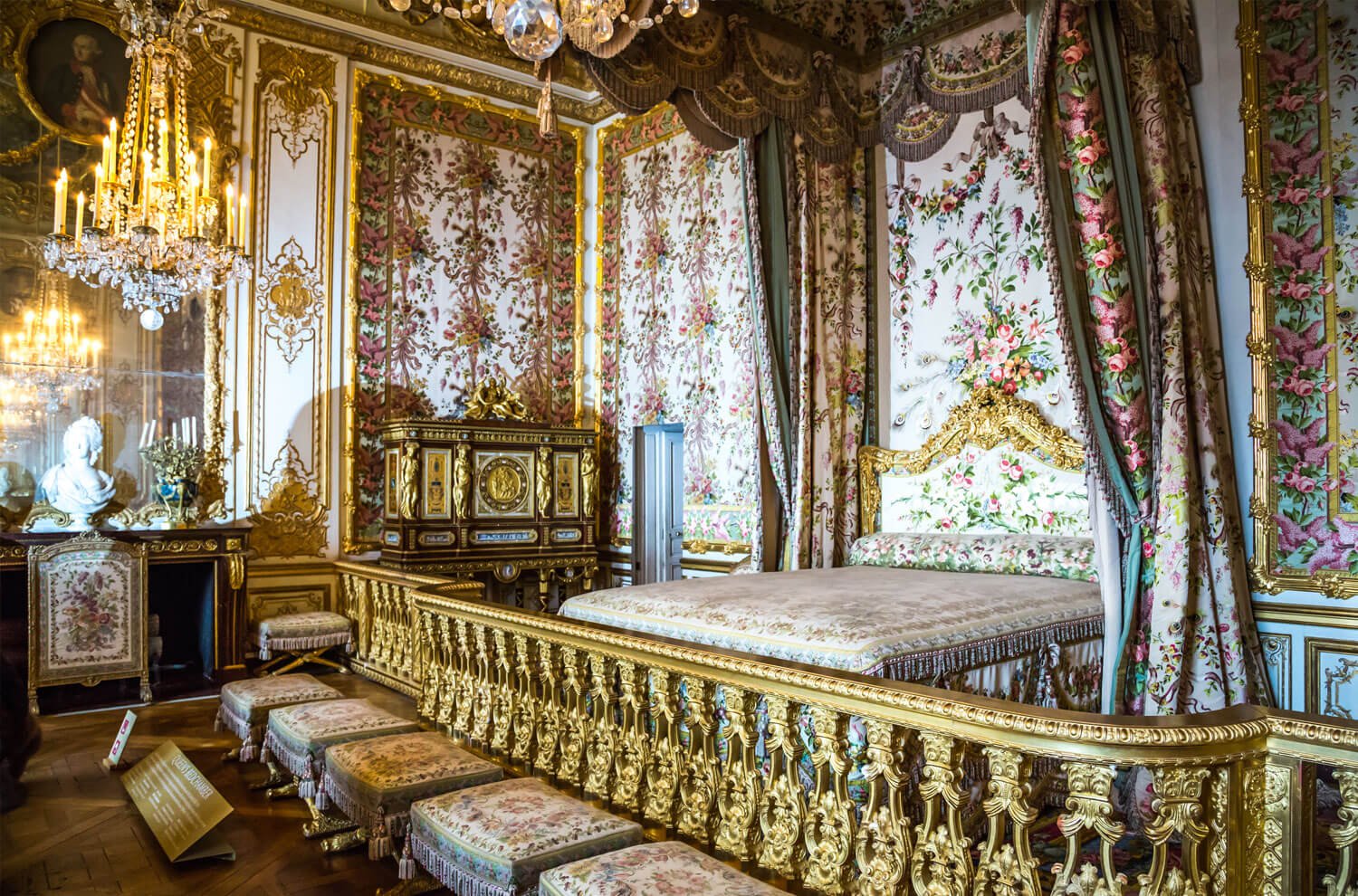
There are also comprehensive hours-long tours that include the Opera house and Marie-Antoinette’s private parlours though even without booking a tour, you can go to the most of opulent rooms and the Hall of mirrors.
The Château de Versailles’s English website has a treasure of information about opening hours, tours, an exhaustive FAQs and you can book your online tickets through the website. The tickets, or Passport, as it is called, costs approximately €18. The gardens are free and not ticketed on most days unless the musical fountains are turned on special occasions and on Saturdays.
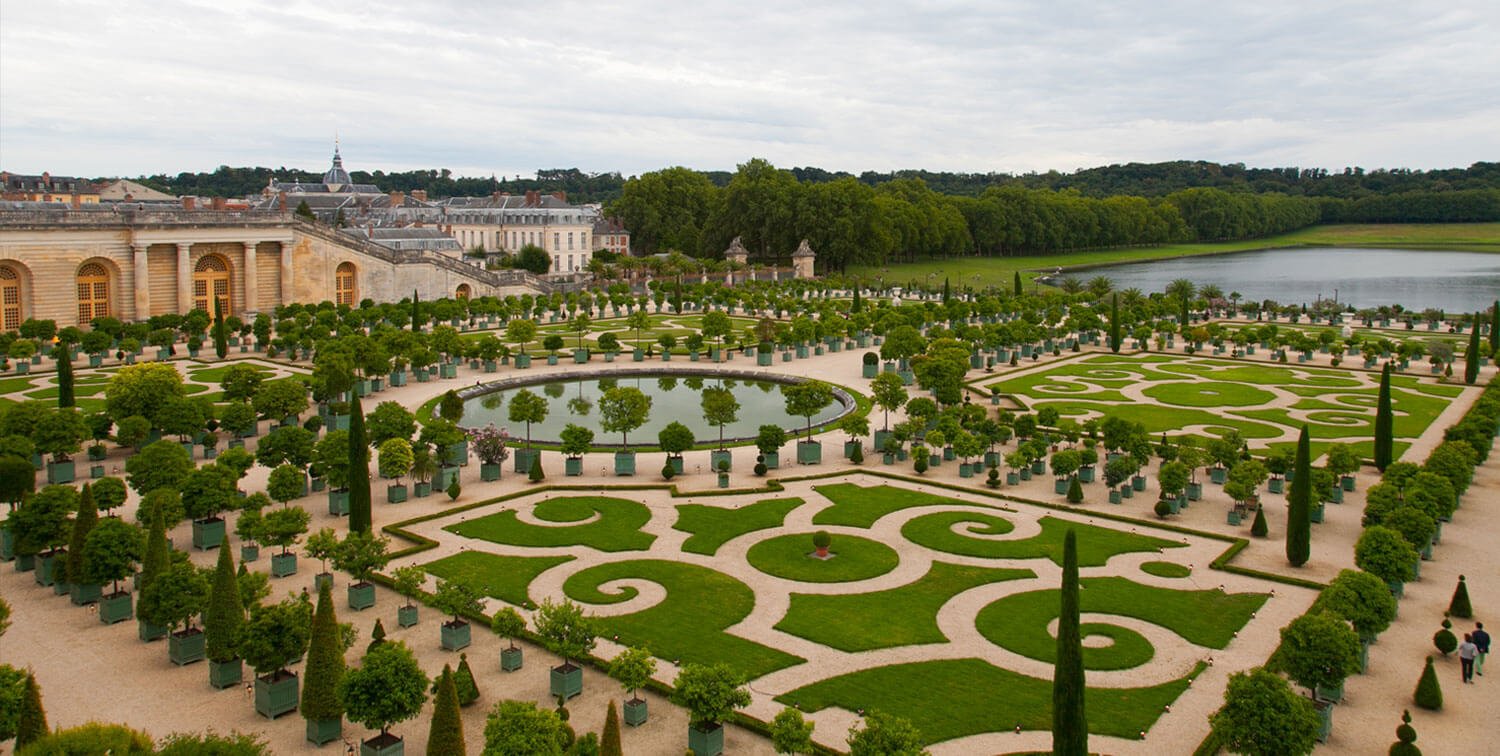
Louis XIV was an ardent nature lover and spent hours in his garden, and he devoted more energy towards the design of the garden than the chateau itself. The theme that runs through the garden is focussed on Apollo, the Sun God to whom he related to and hence was called the Sun King.
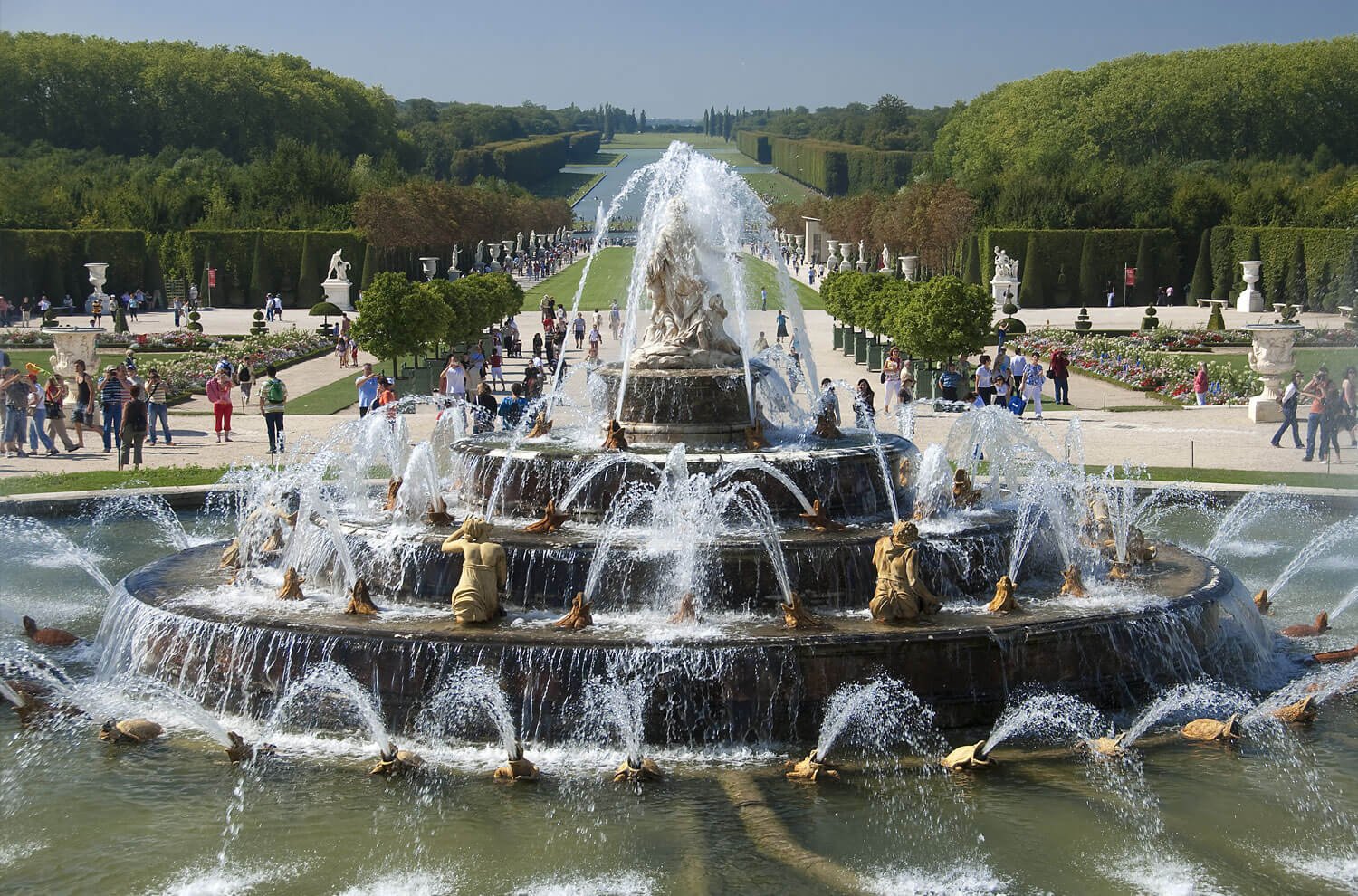
After the Revolution, Versailles ceased to be the seat of power and post 1830 saw it become the Museum of the History of France.
Both the Palace and the Gardens are an UNESCO World Heritage Site.
Champs-Elysées
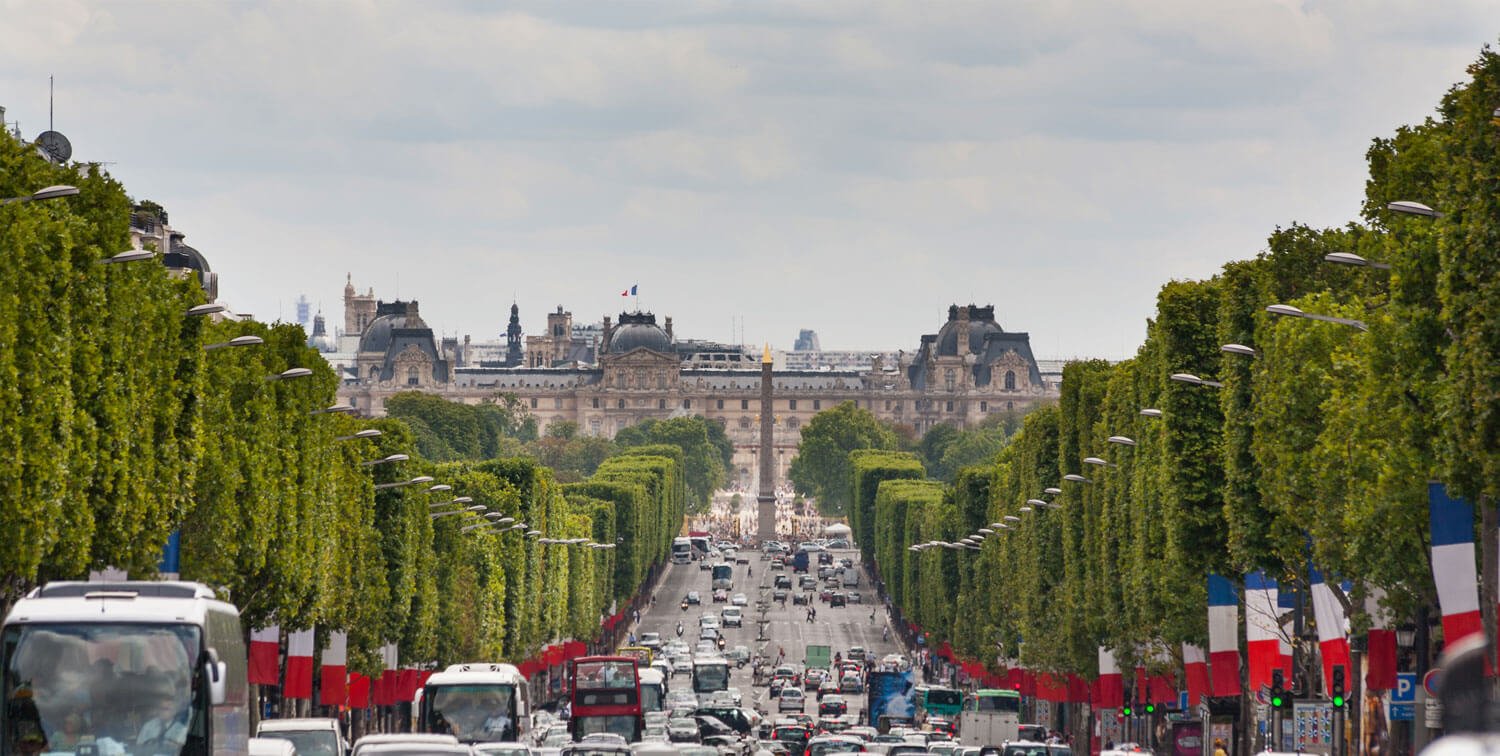
This facility was constructed at the behest of the Sun King, Louis XIV in 1670 to provide shelter for soldiers disabled in war and was once home to nearly four thousand soldiers, hence the name. There is still a hospital for veterans functioning currently out of its premises. The Musée de l’Armée also functions from this premises and contains an exhaustive collection of armours, weapons and other military artefacts.
Palais Garnier
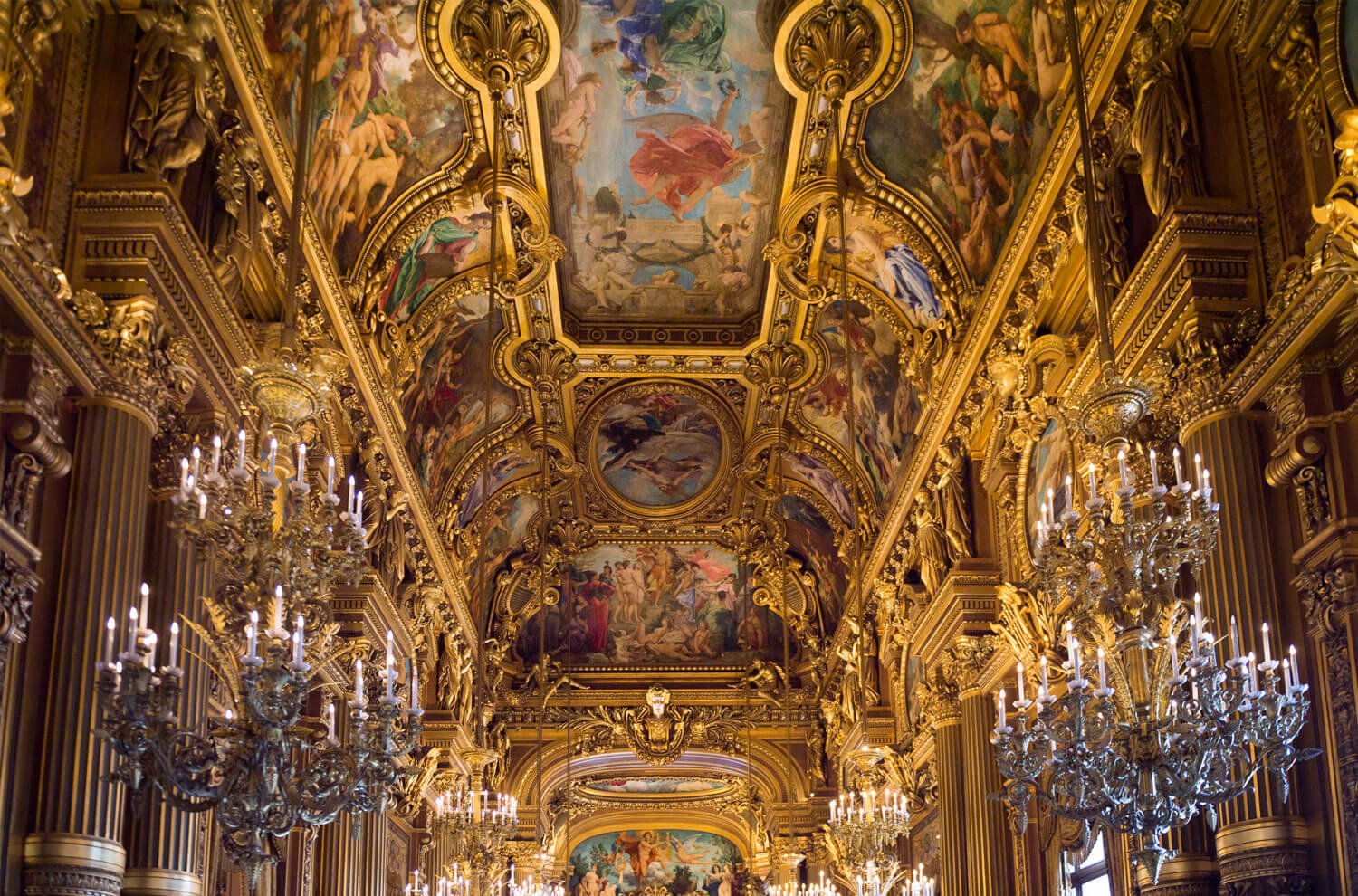
The setting for the Phantom of the Opera, the extraordinarily delightful Opéra Garnier was the inspiration for Edgar Degas’ dancer paintings. The gorgeous Opéra Garnier hosts also the National Opera of Paris.
It was constructed by a then obscure artist, Charles Garnier, and the work that began in 1860 was only completed after 15 years, saddled with an overblown budget, but worth every franc spent as its opulence and grandness needs to be witnessed first-hand. The opera’s craftsmanship includes intricate artwork with real gold leaves, marbles of various hues, sculptures and painting by the major artists of the day and it matched in grandeur to none other than the Versailles Chateau, and in cocking a snook at subtlety. There were murmurs against the opulence especially the sweeping marble staircase which came in for extra scrutiny and criticism.
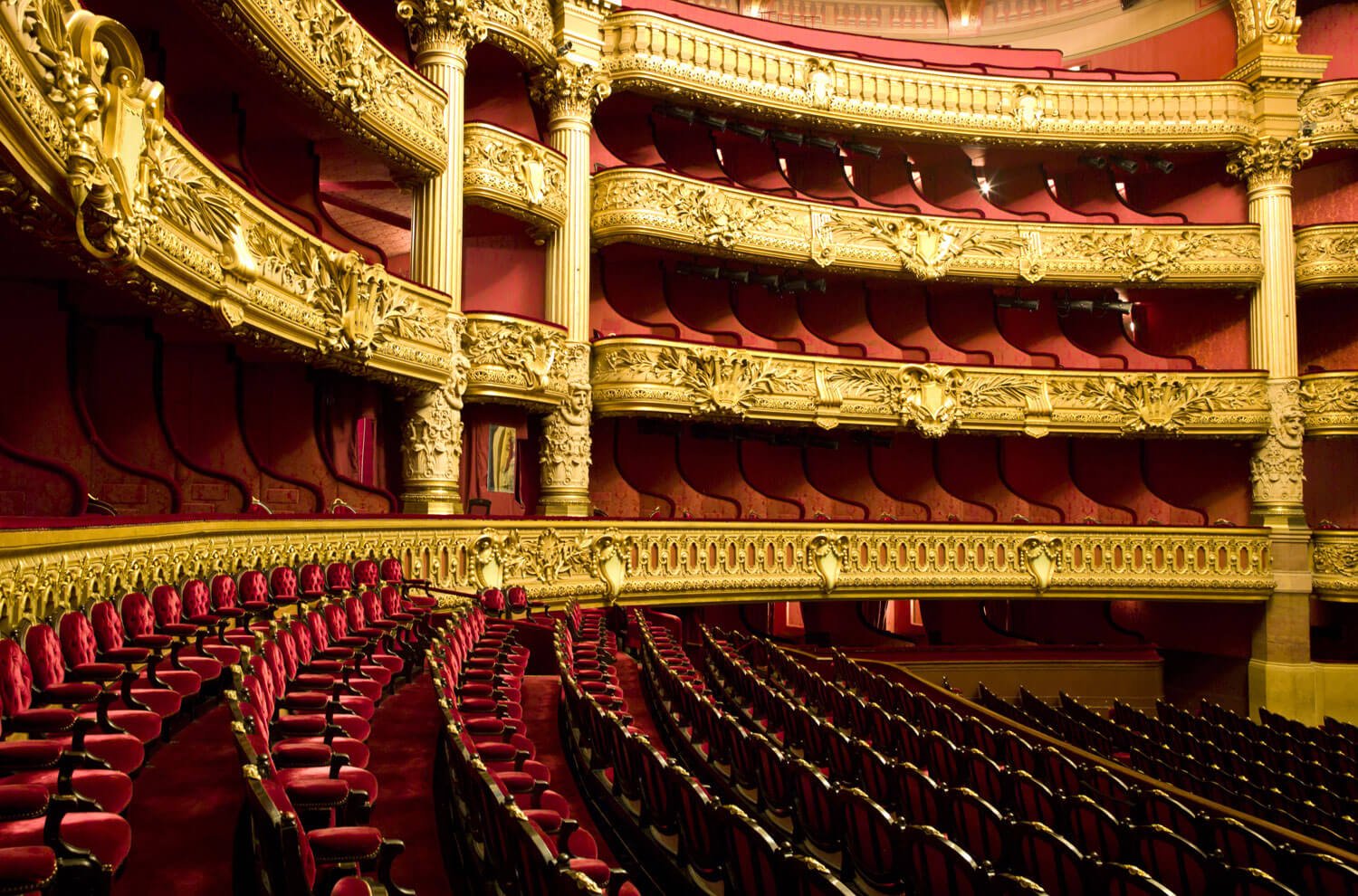
Entrance to the Opera Garnier is ticketed and gives you access to almost all parts of the building and a glimpse of the auditorium. There are English tours of the Opera on Saturday, Sunday and Wednesday at 11:30 and 3:30 and in summer, they add one more at 2 pm.
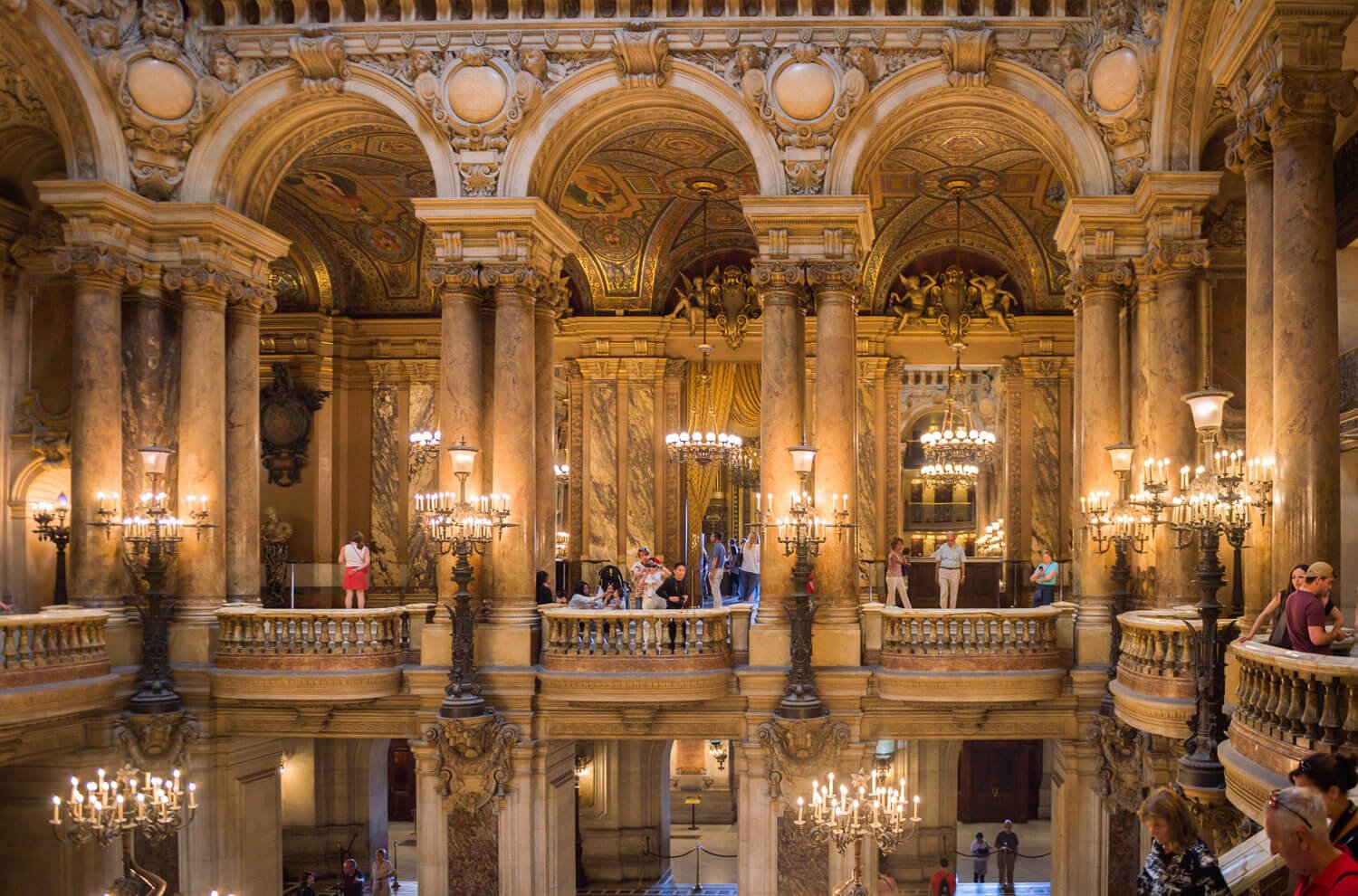
To complete the experience, you could dine in the on-site contemporary restaurant, L’Opéra, run by ChefStéphane Bidi.
Disneyland Paris
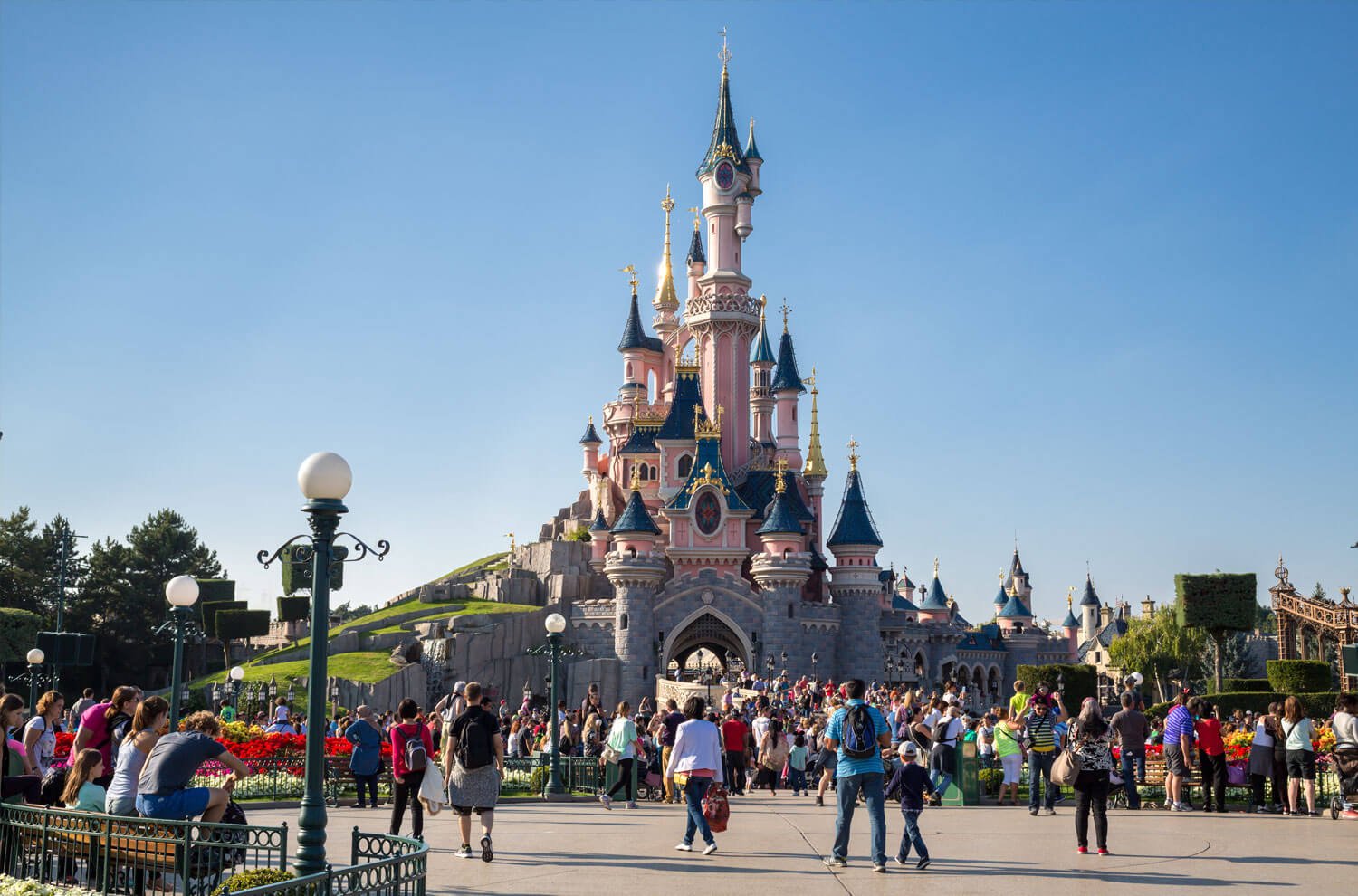
You’re never too old for the magic of Disneyland Paris. From high-octane rides for thrill-seekers to sophisticated spas and gourmet dining, plus fireworks and laser shows galore, Disneyland Paris is definitely for adults as well as kids – in fact, the Disneyland Paris parks are perfect for a grown-up getaway. There are lots of attractions to enjoy, including, two separate theme parks (Disneyland Park and Walt Disney Studios Park). It also includes avillage packed full of attractions such as cinemas (including an IMAX), theatres, golf courses, restaurants and bars, and much, much more.it also gives you an opportunity to come face-to-face with favourite Disney characters and enjoy a host of special seasonal events – guaranteed fun for everyone!
Read More

